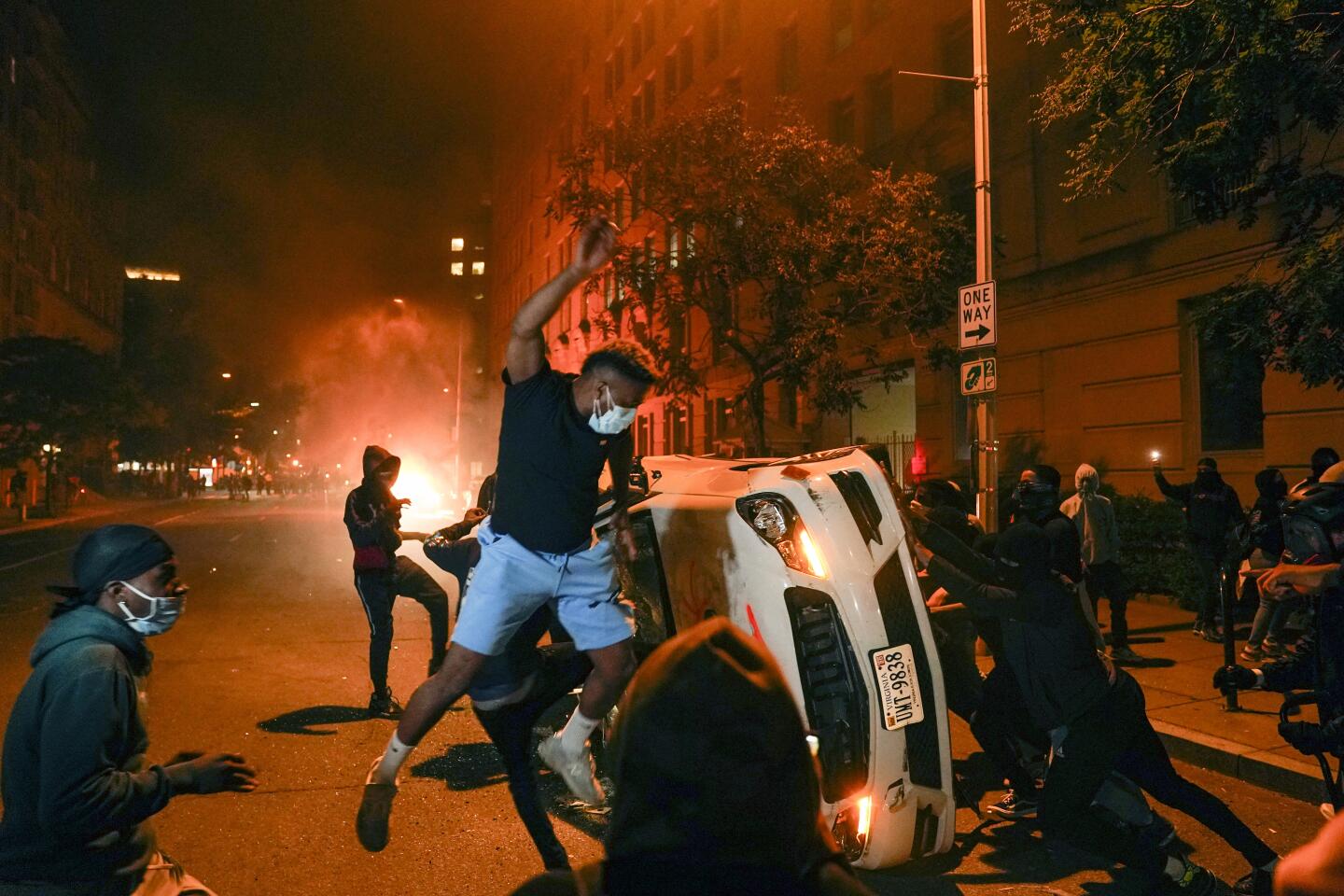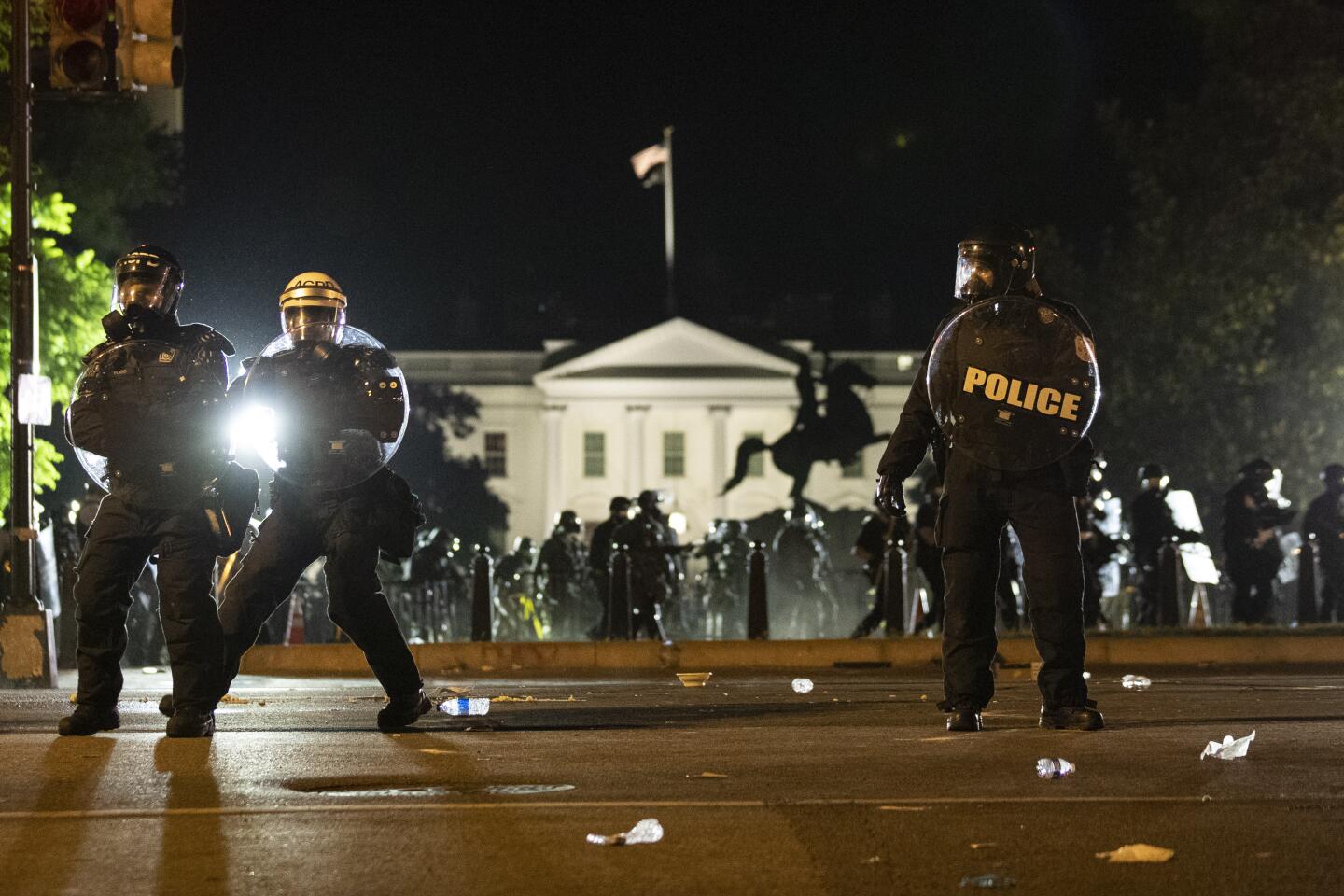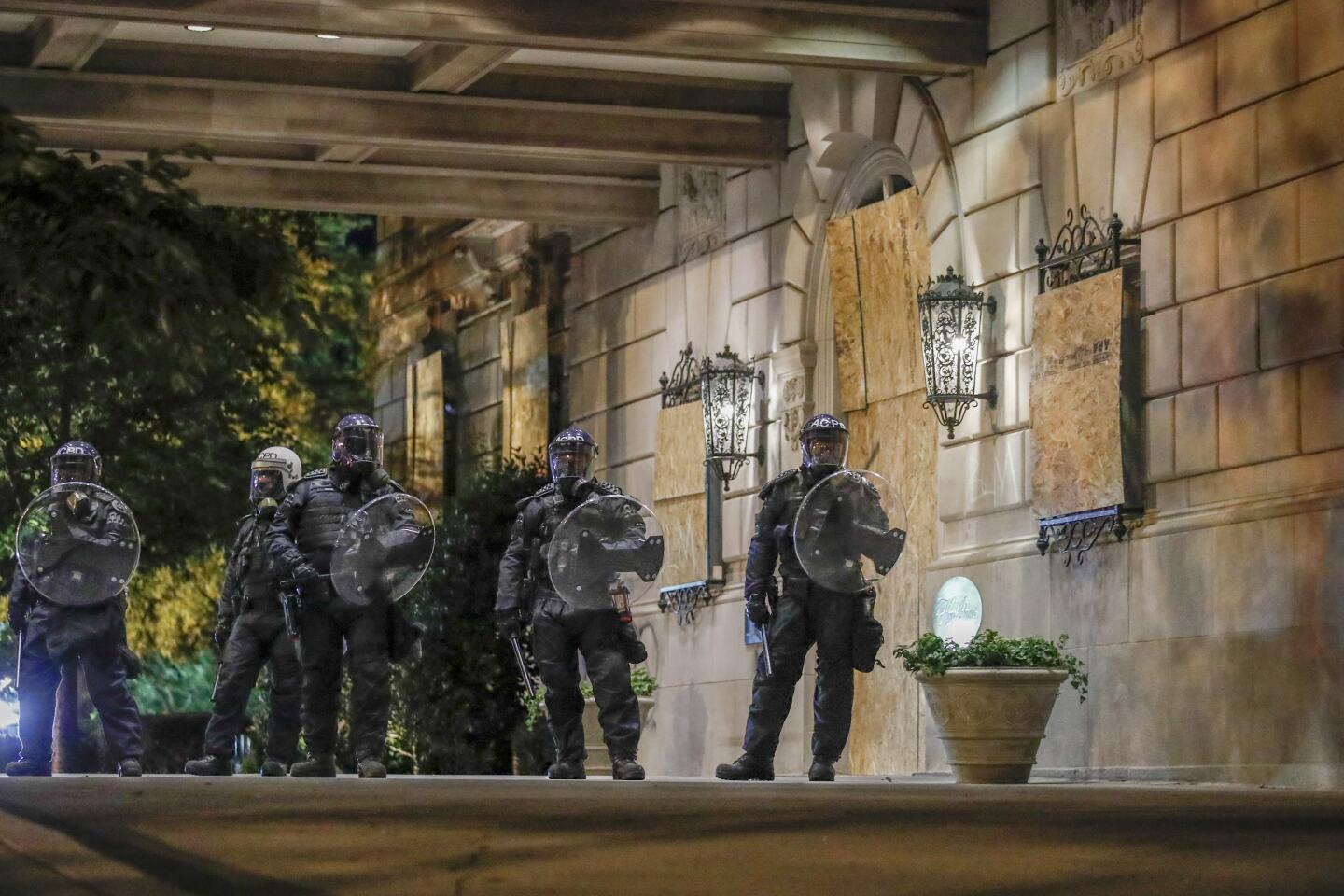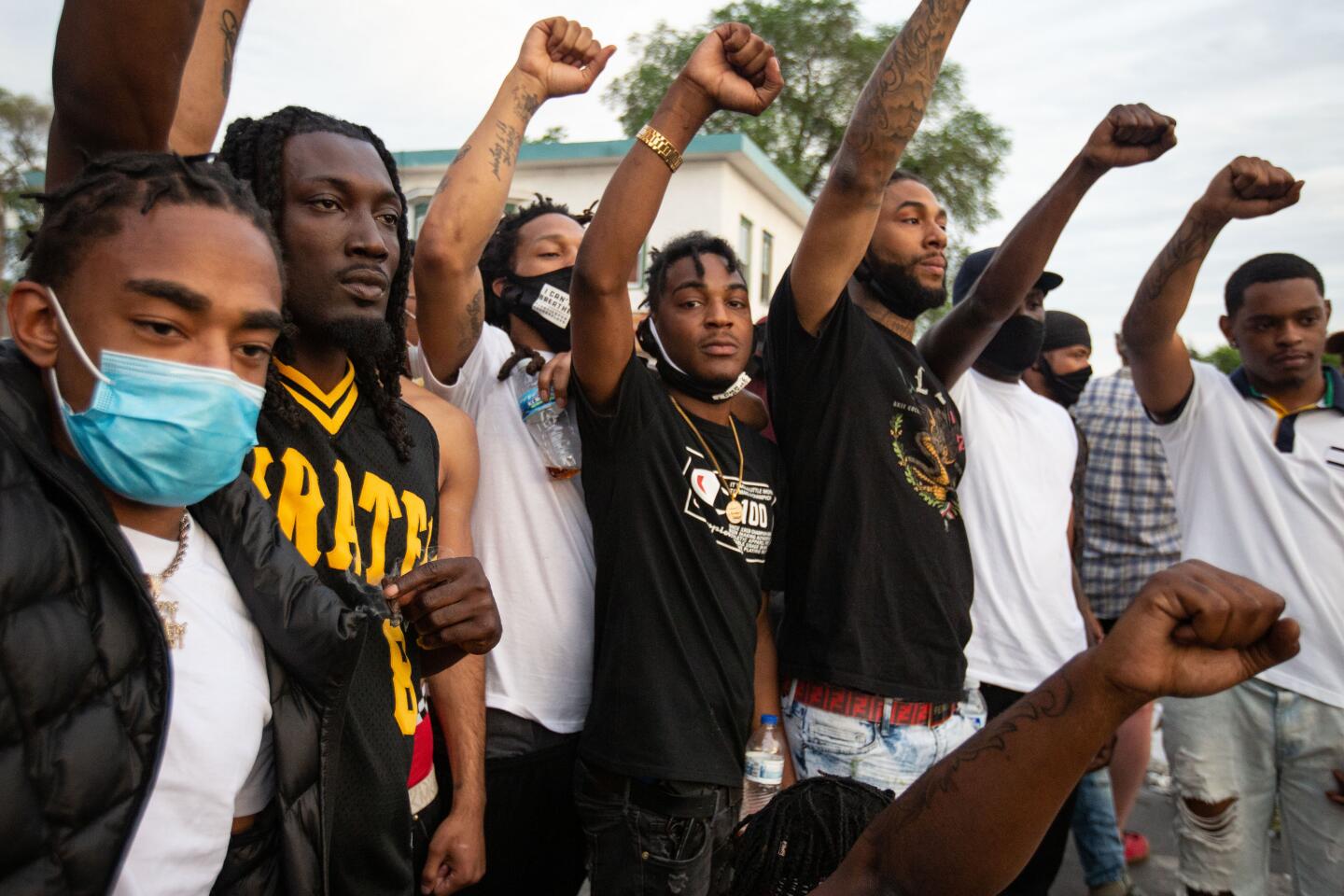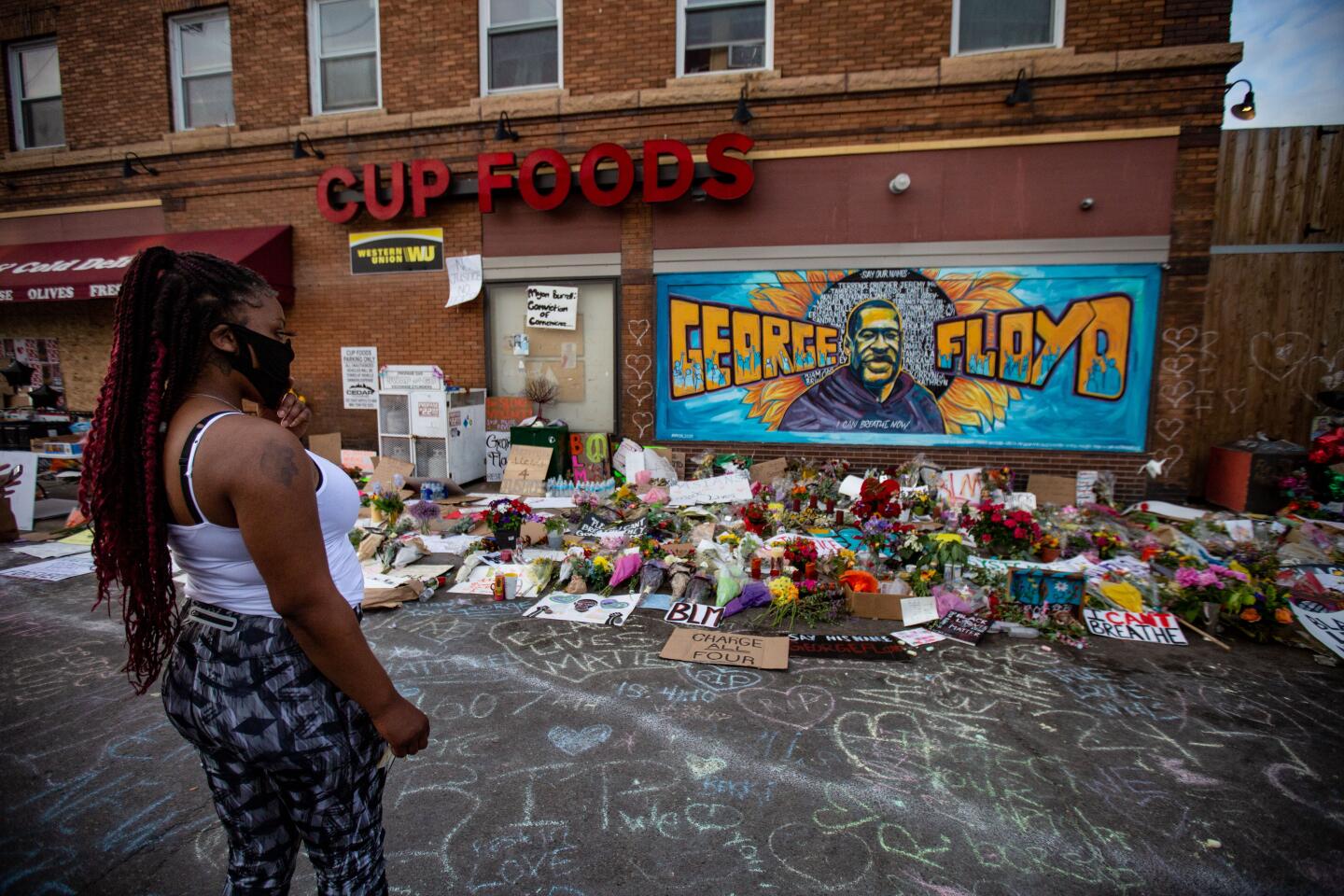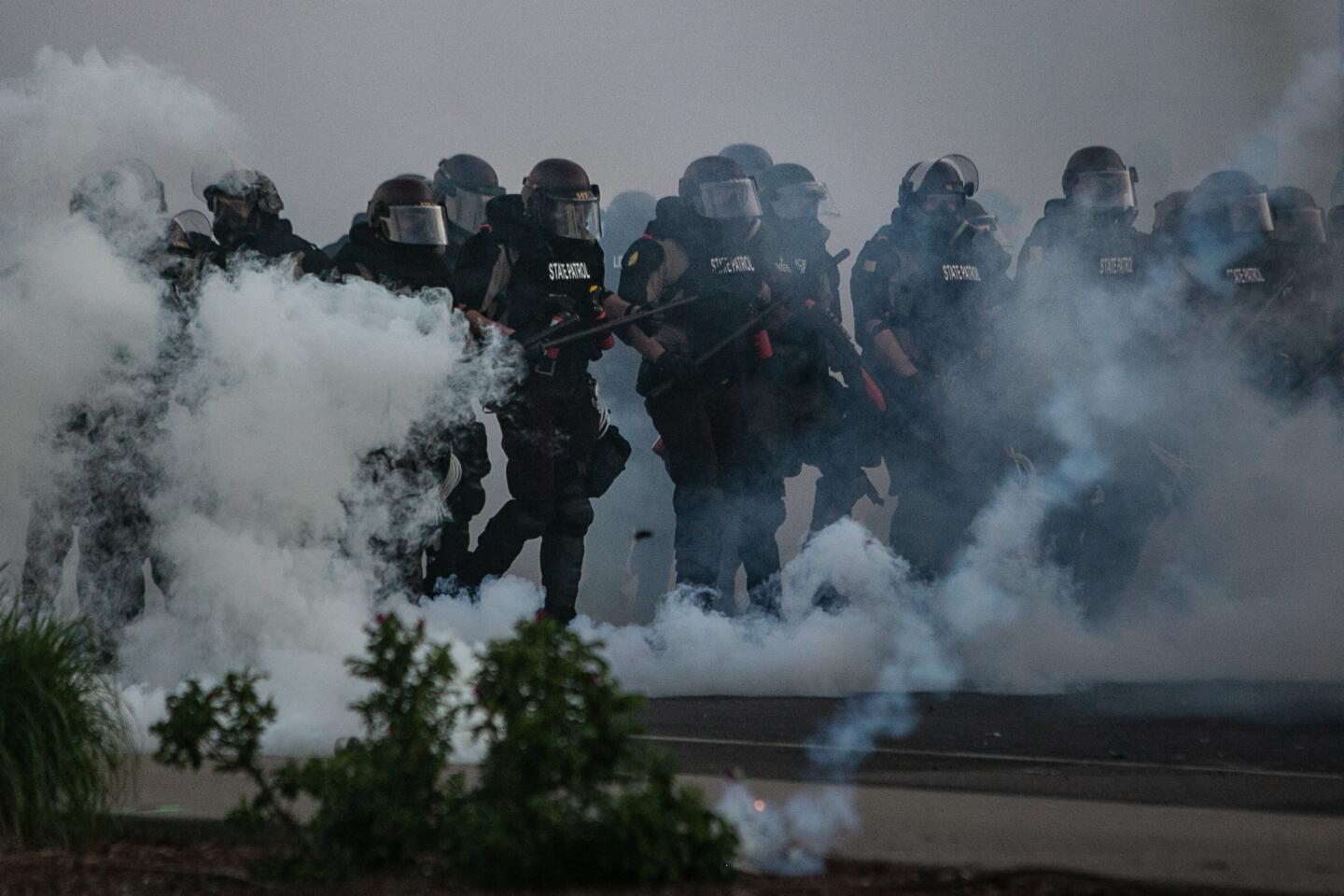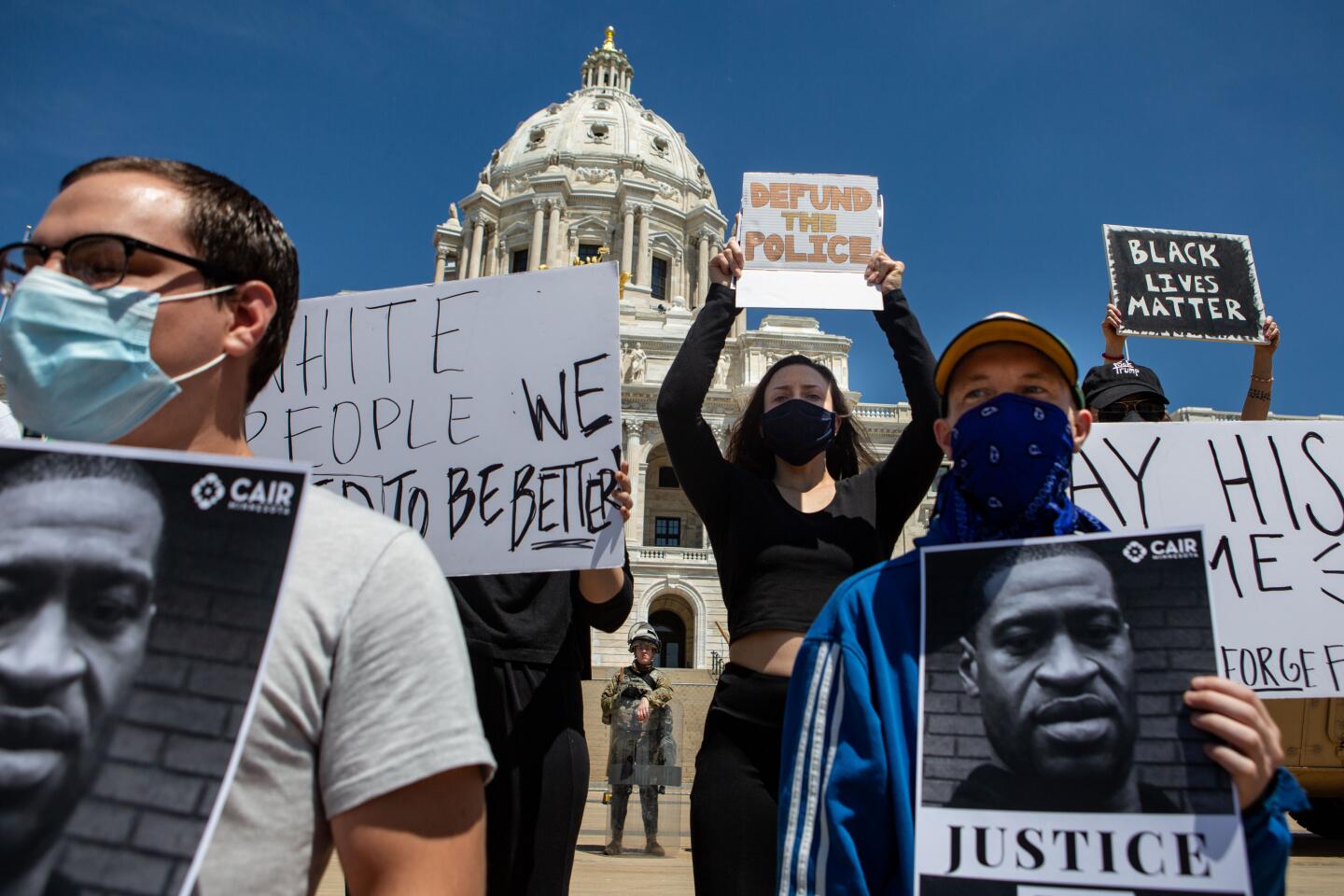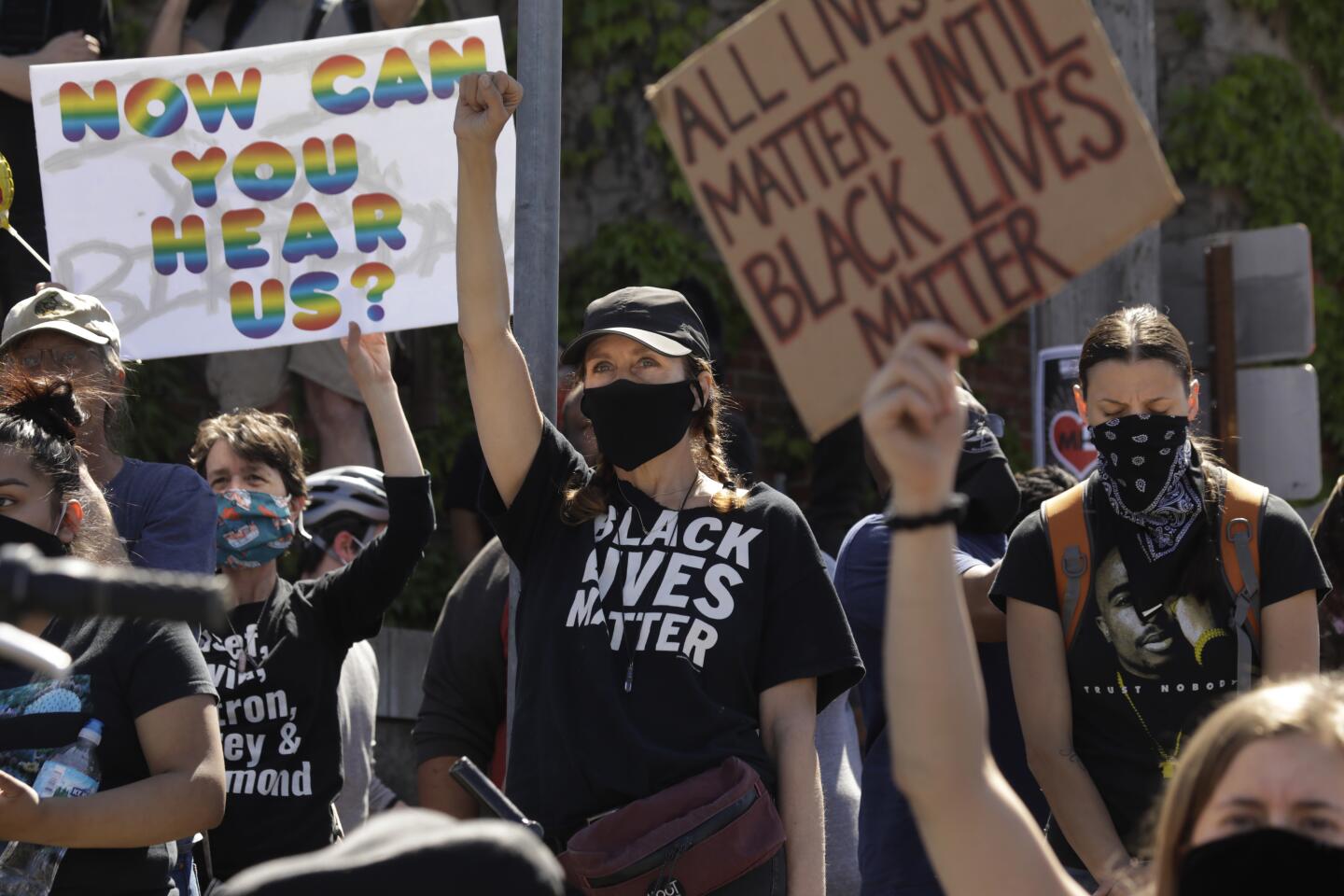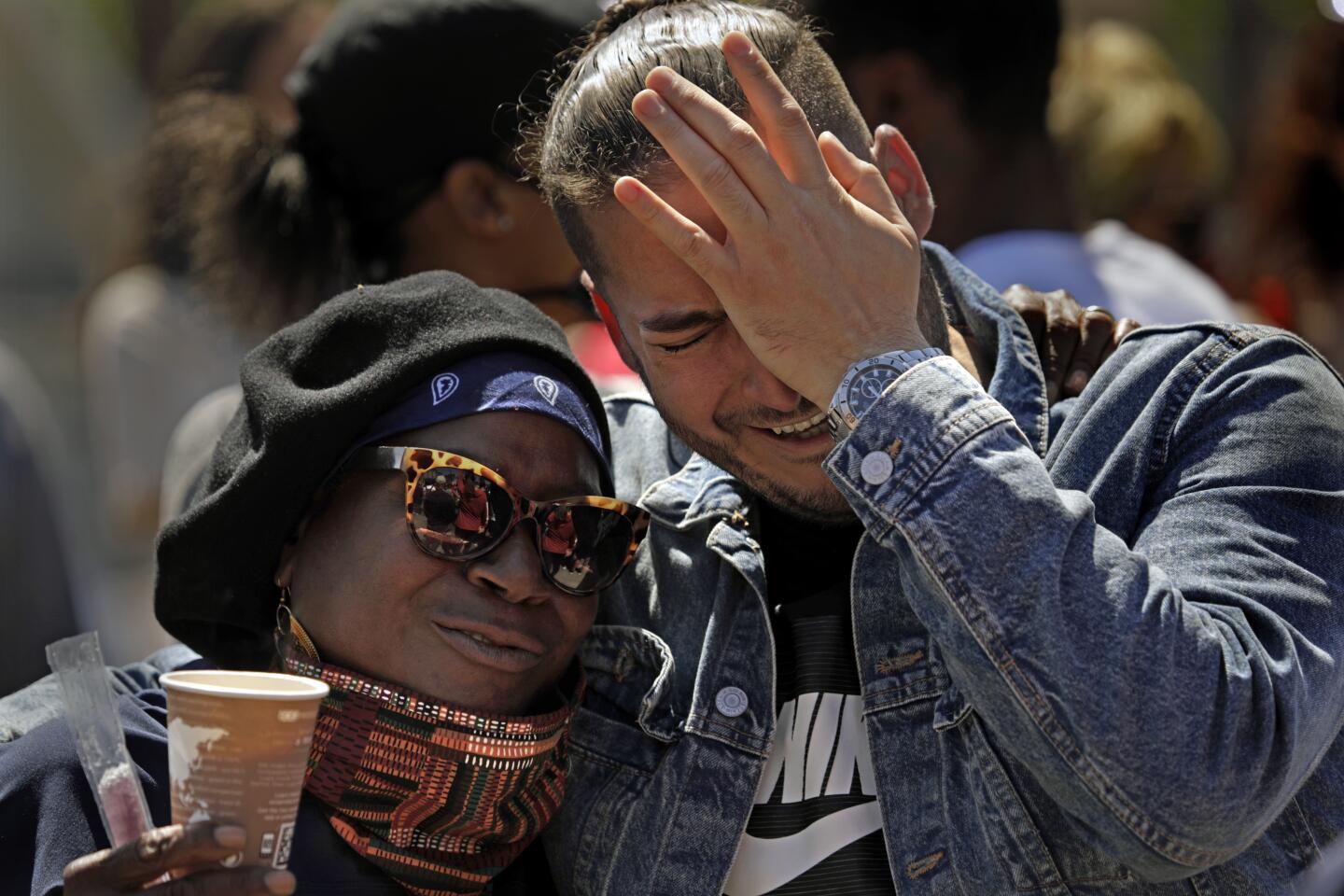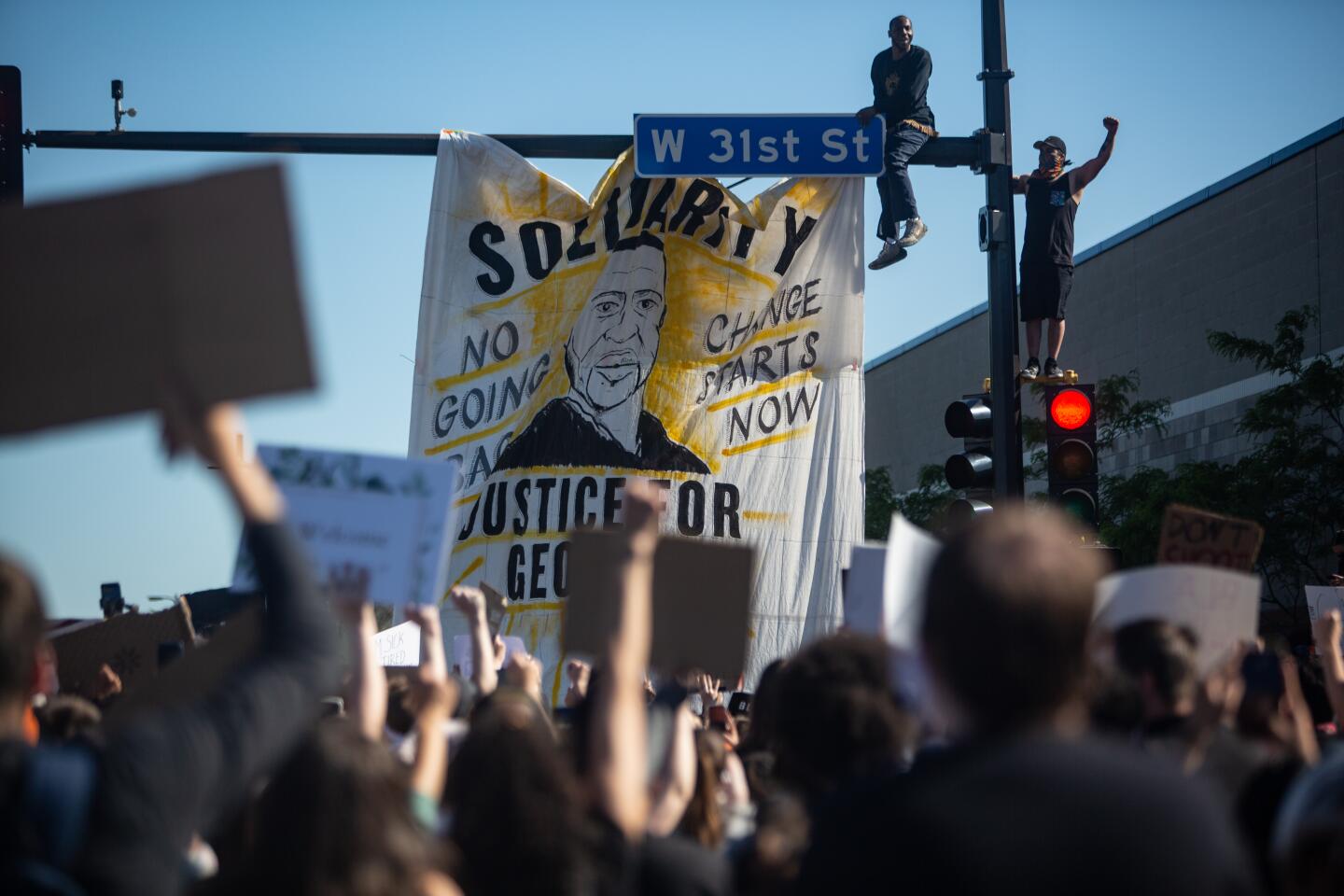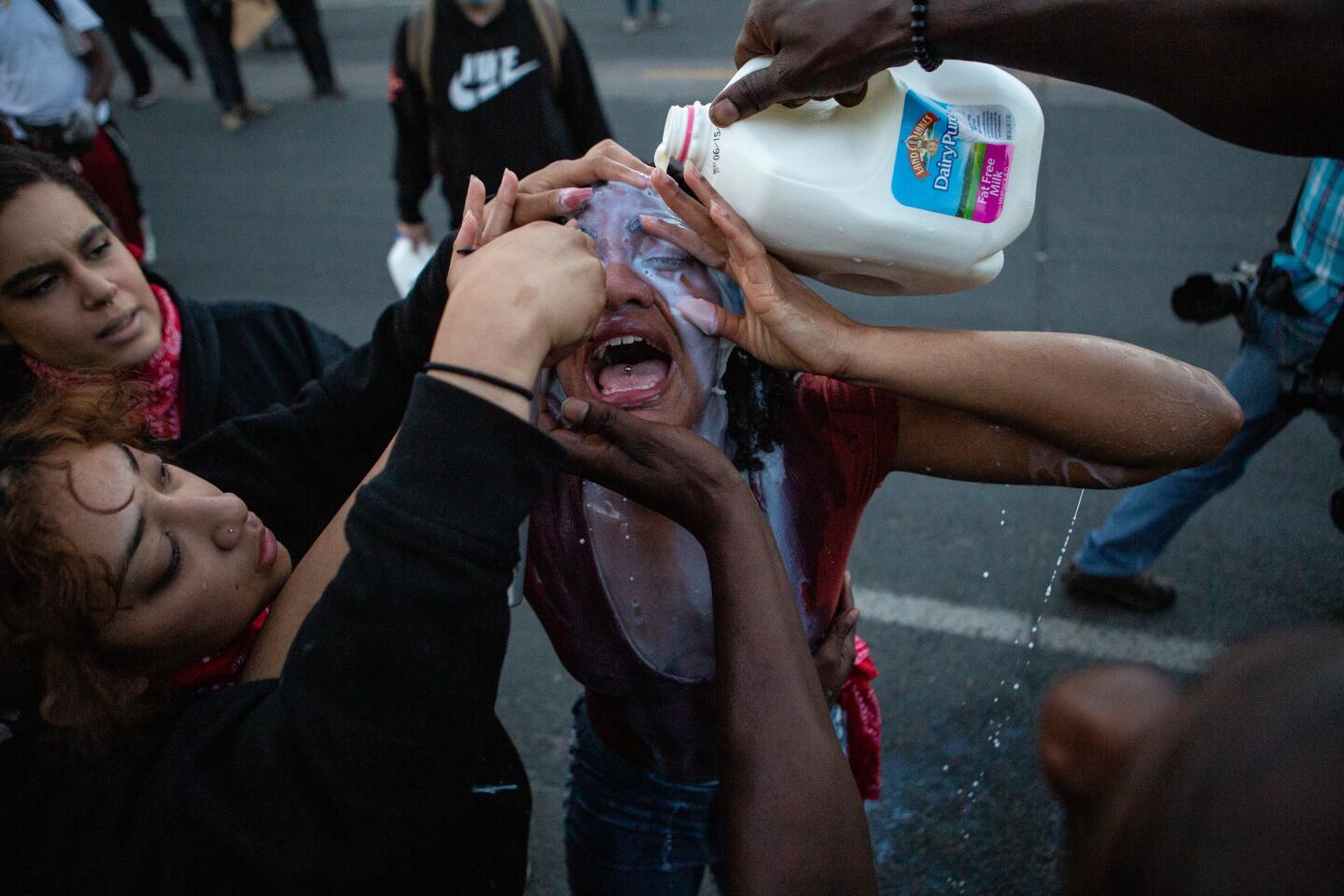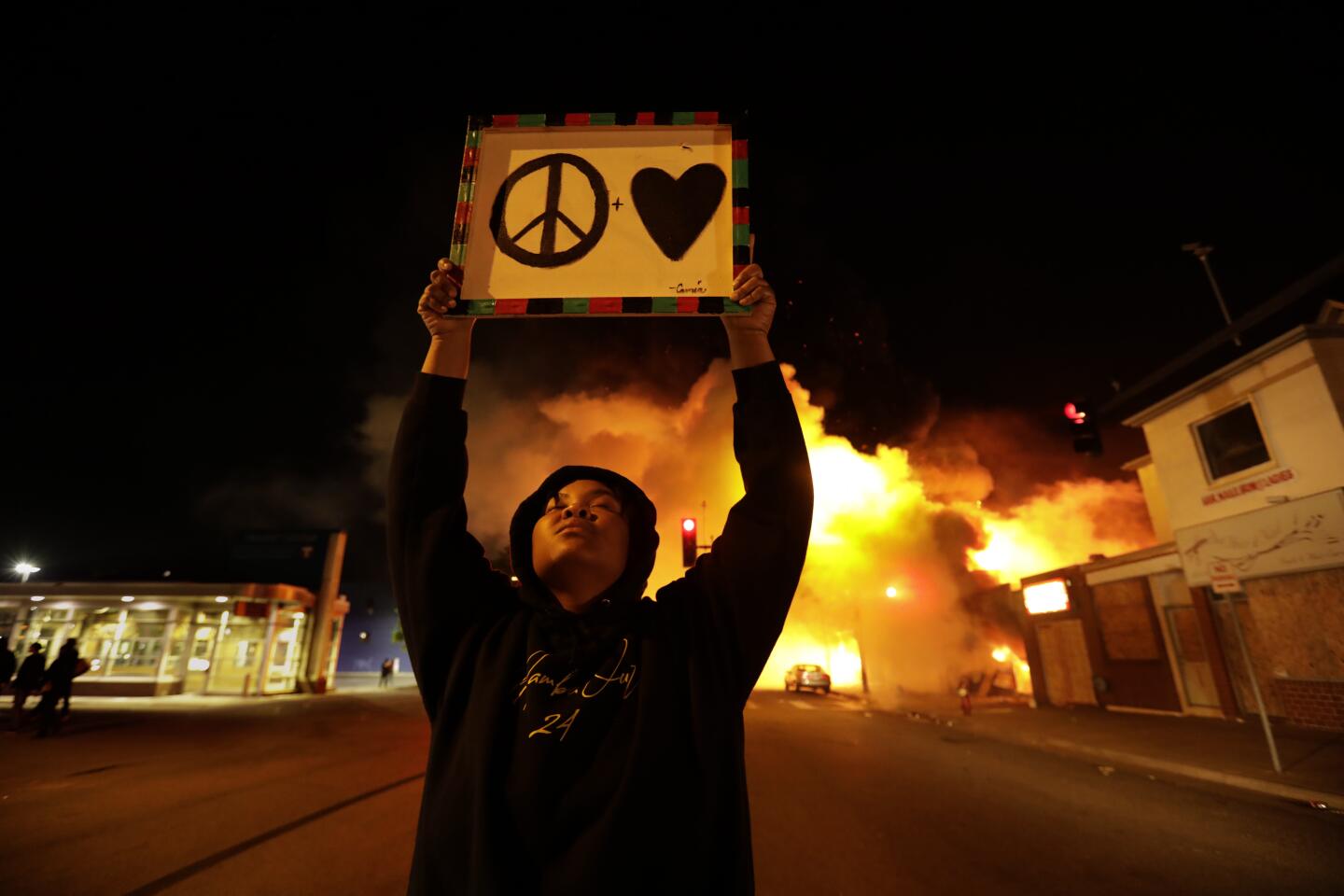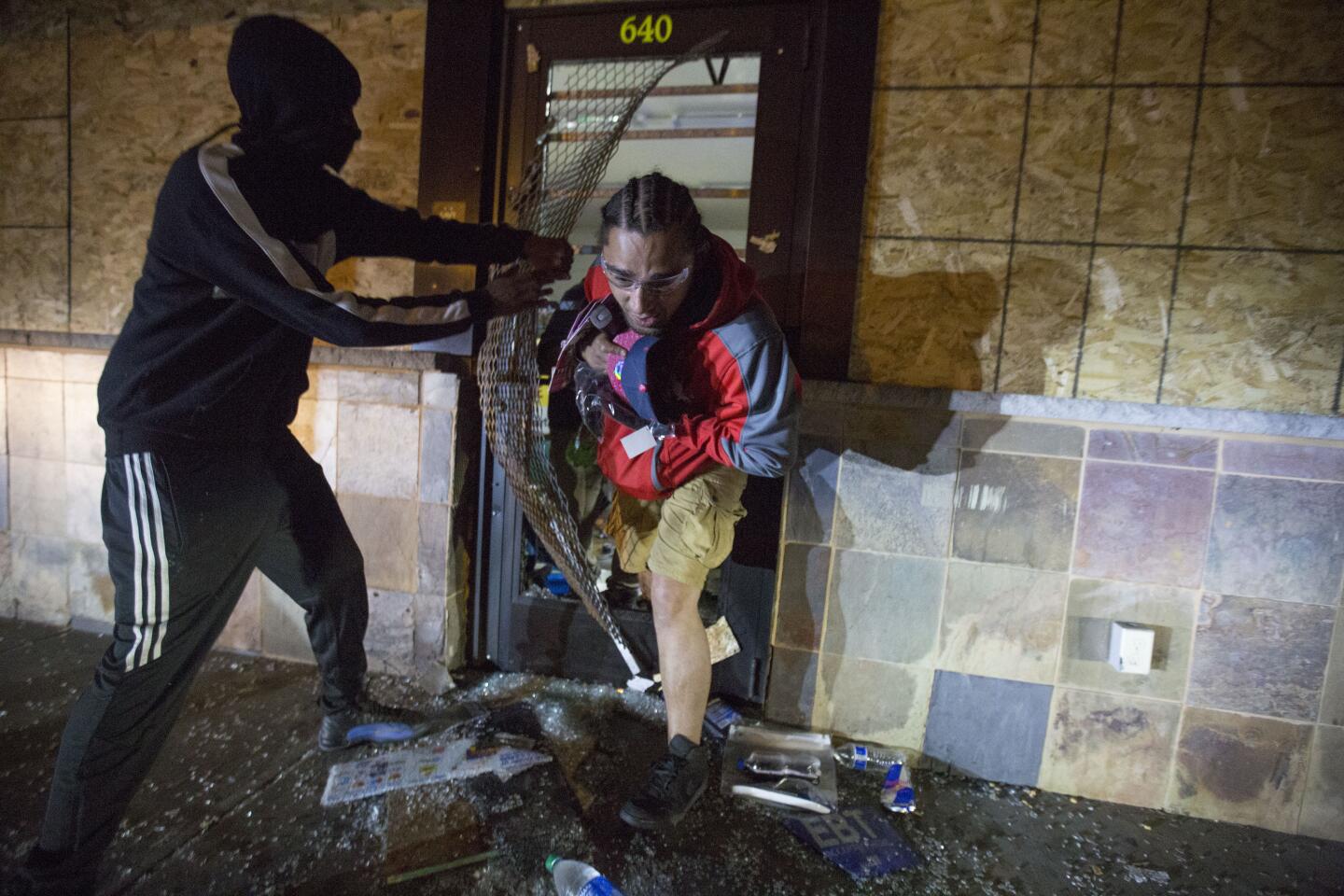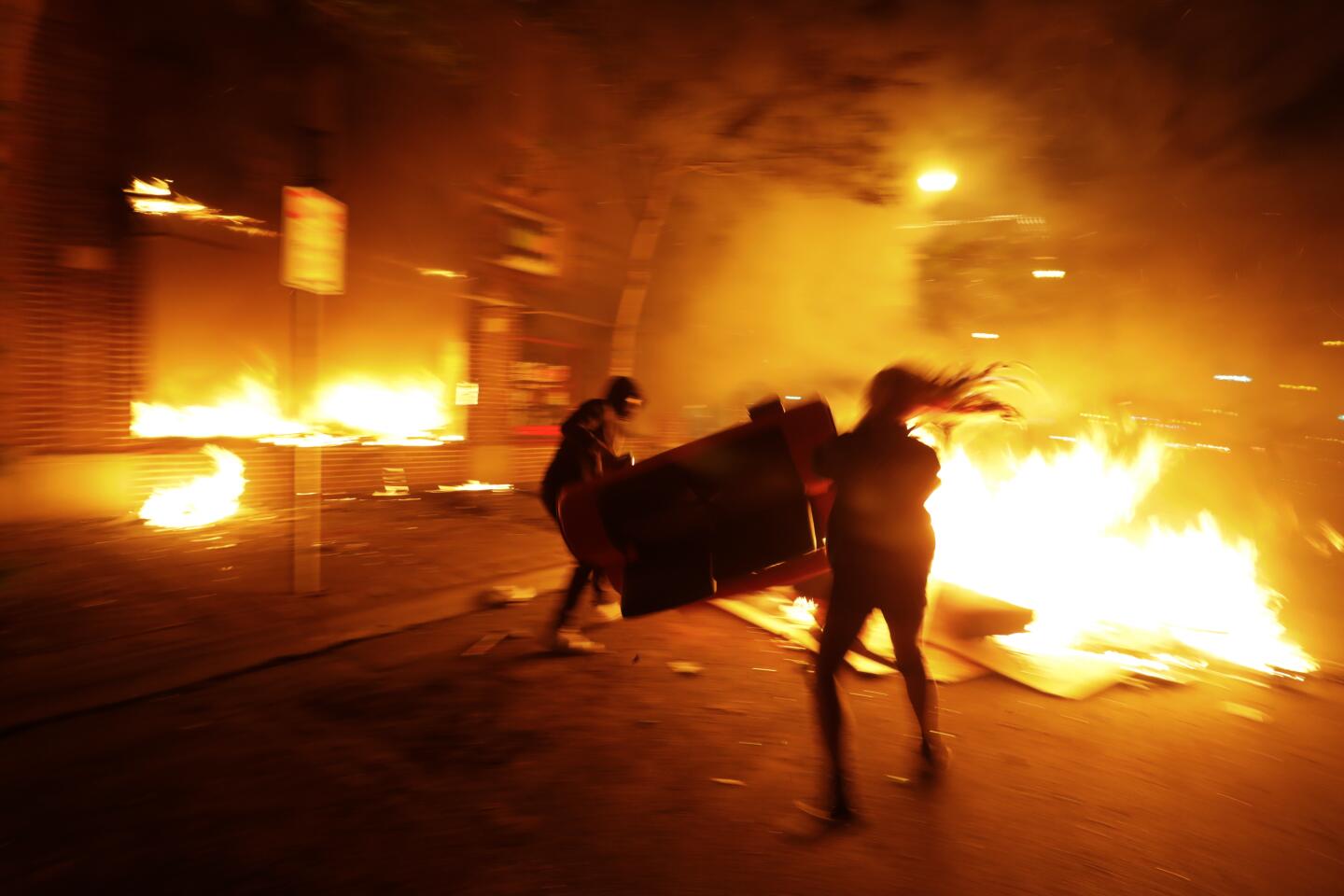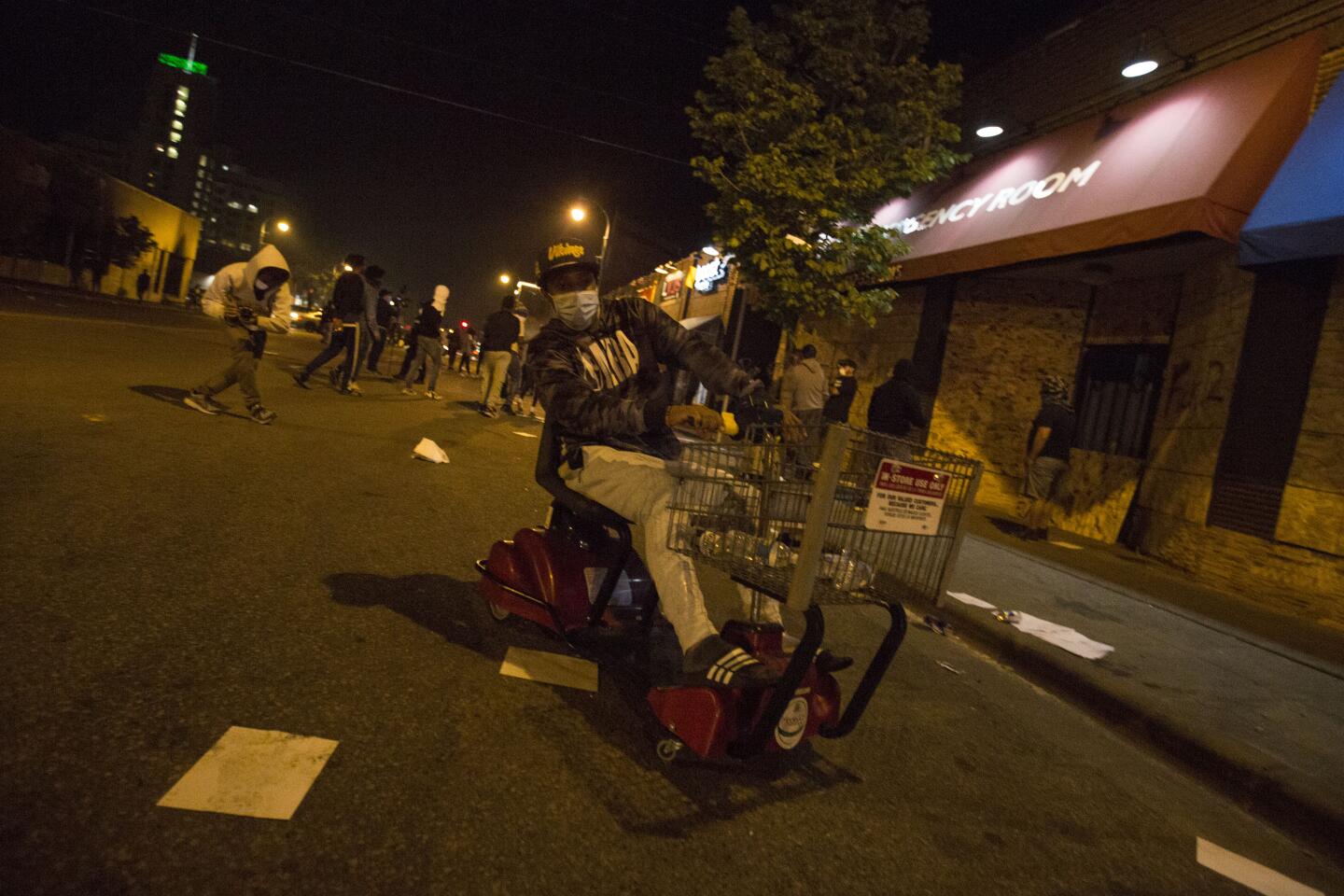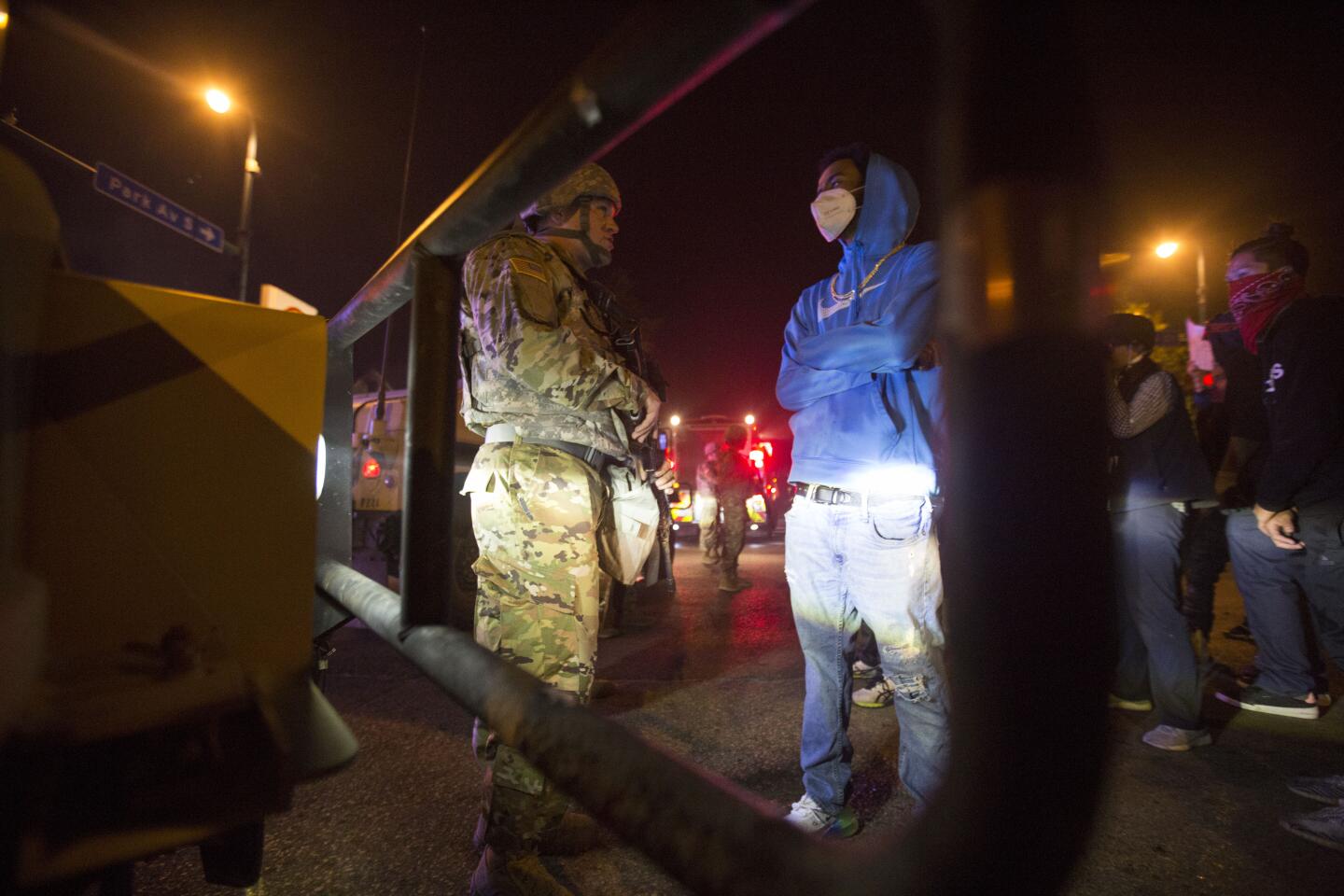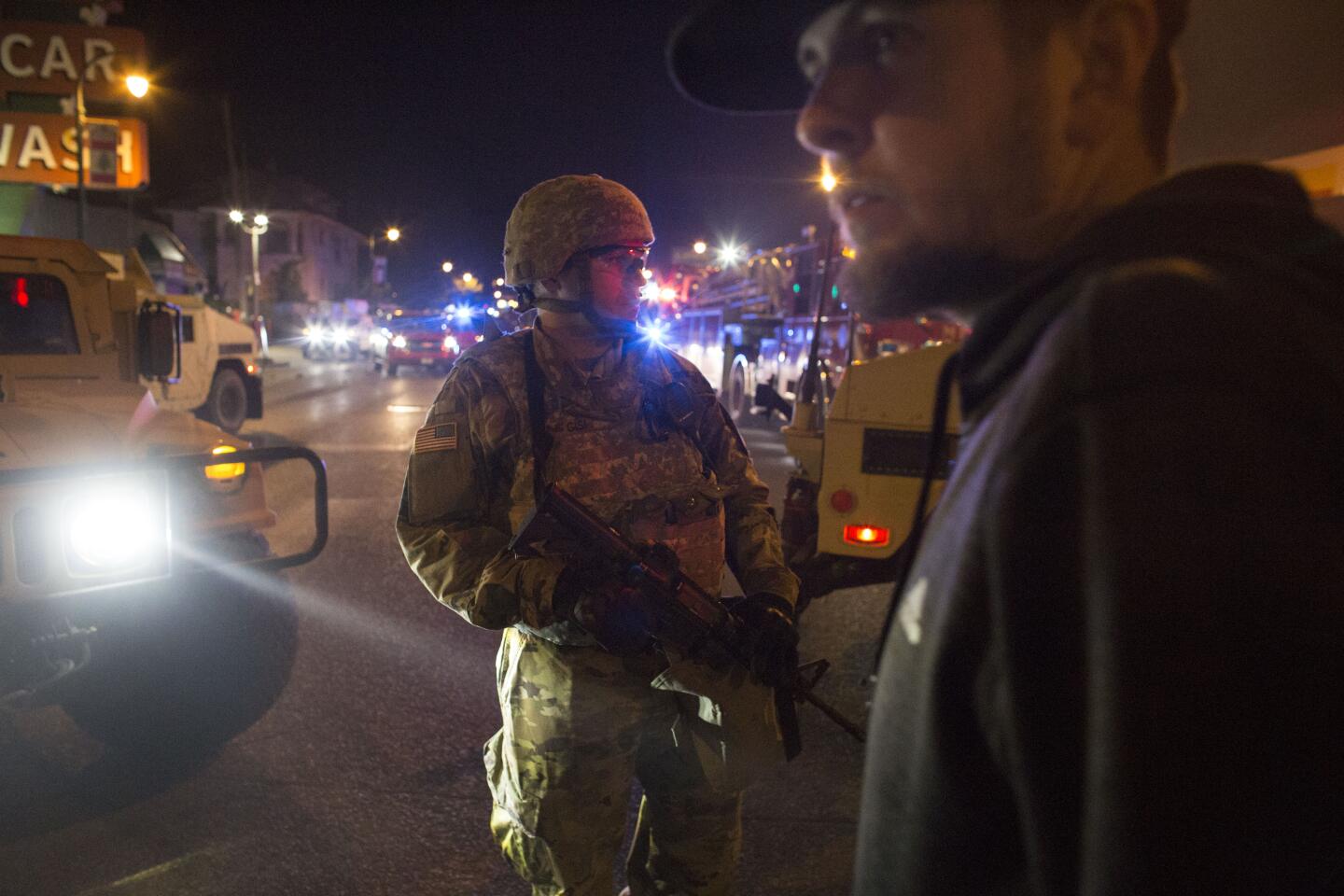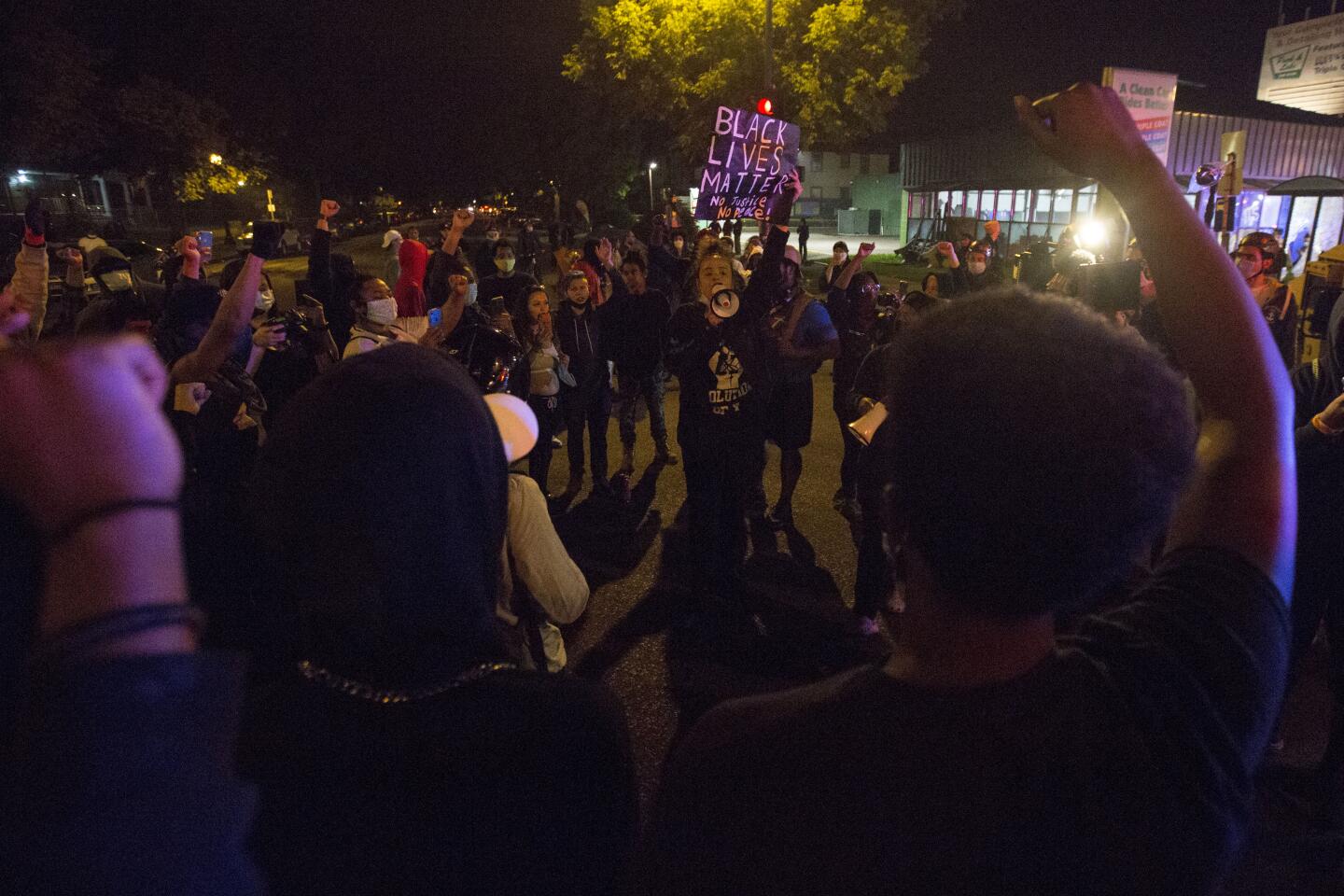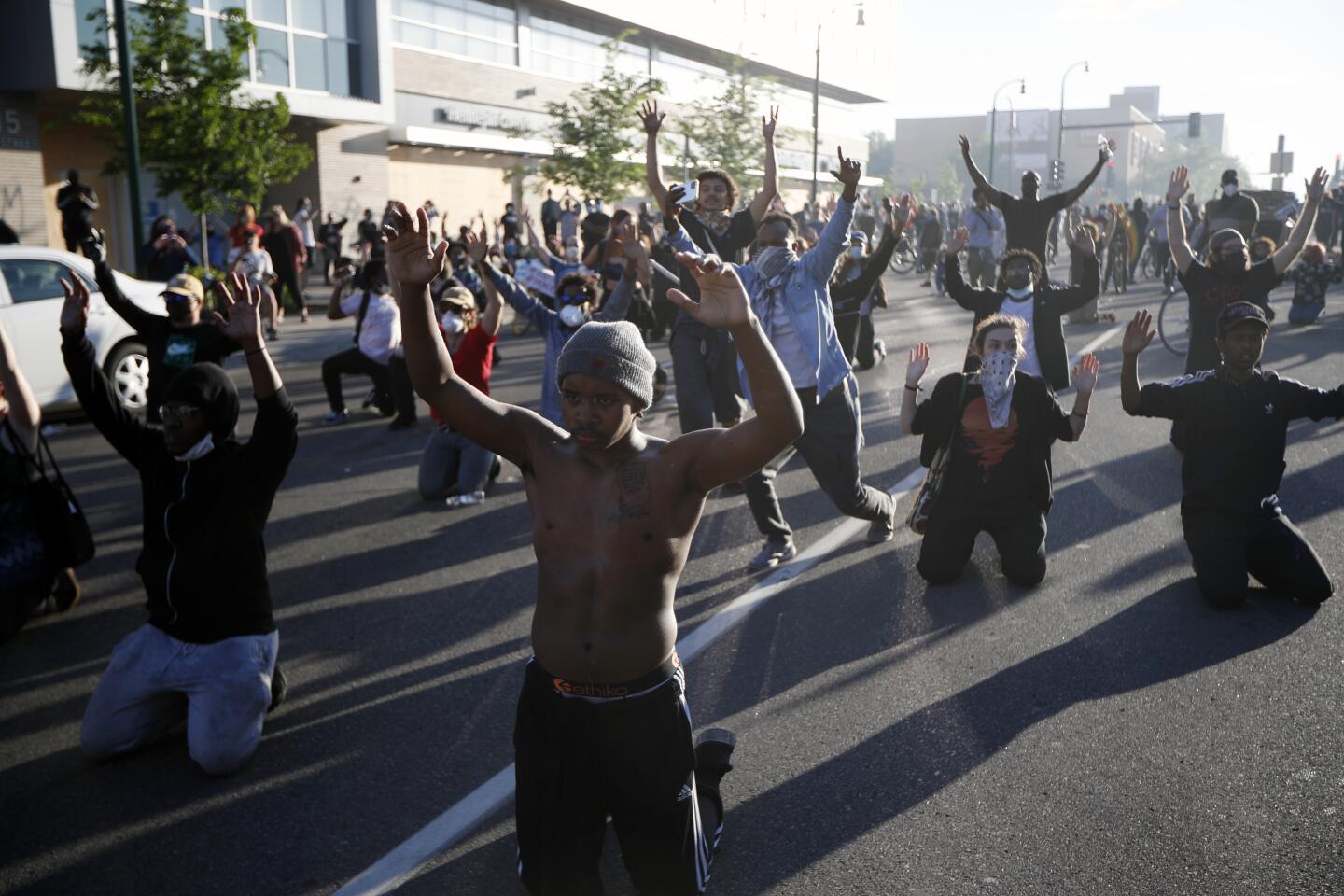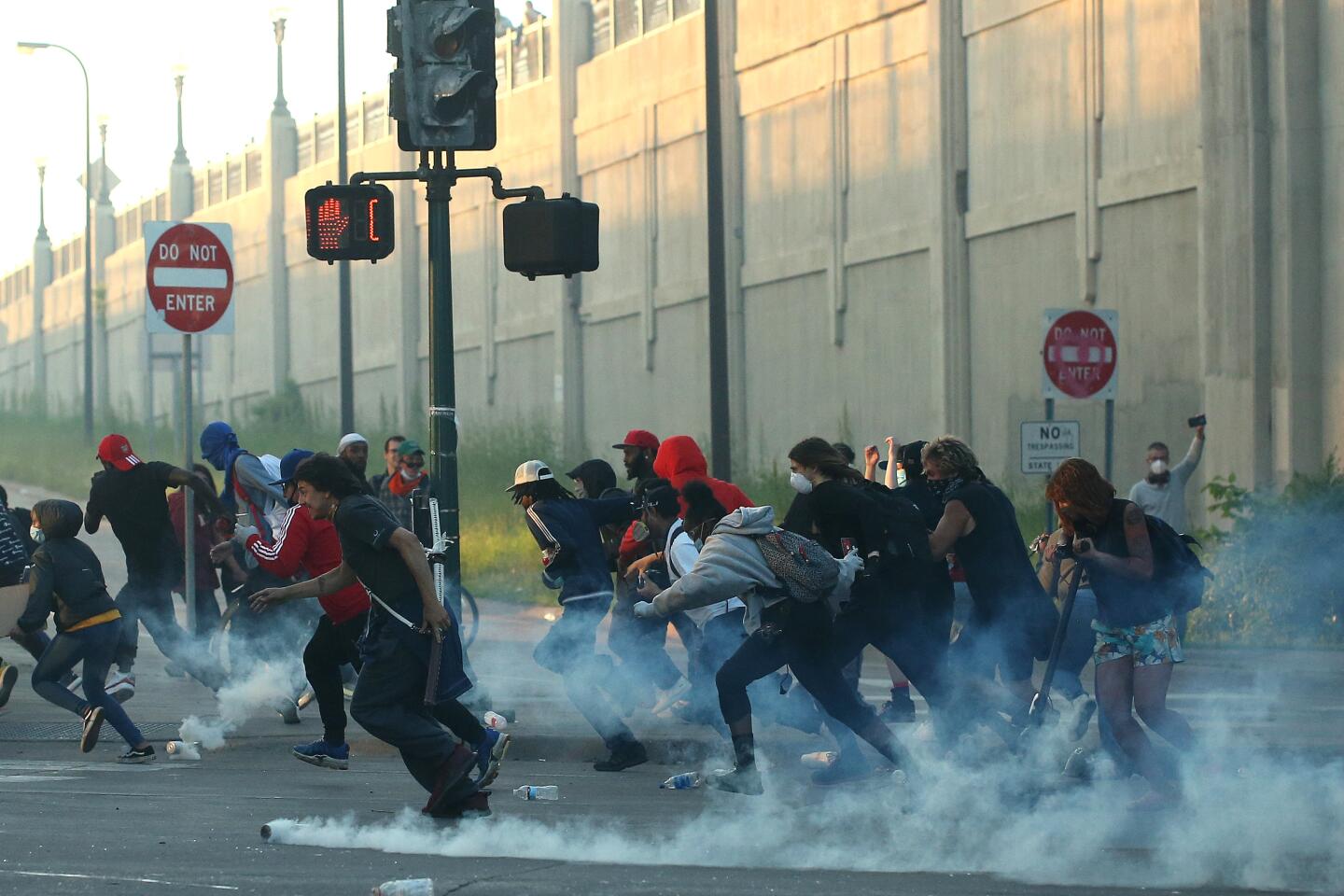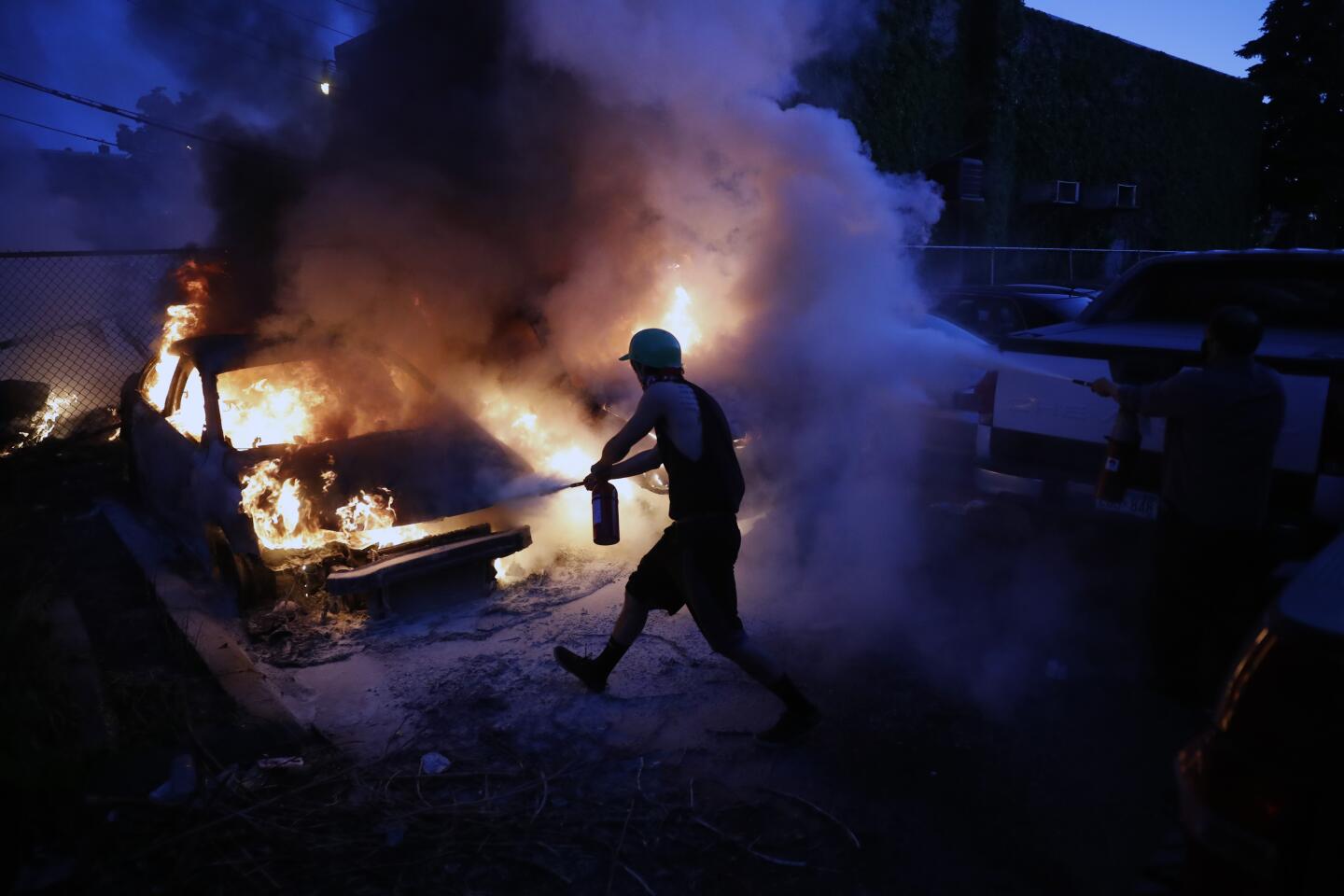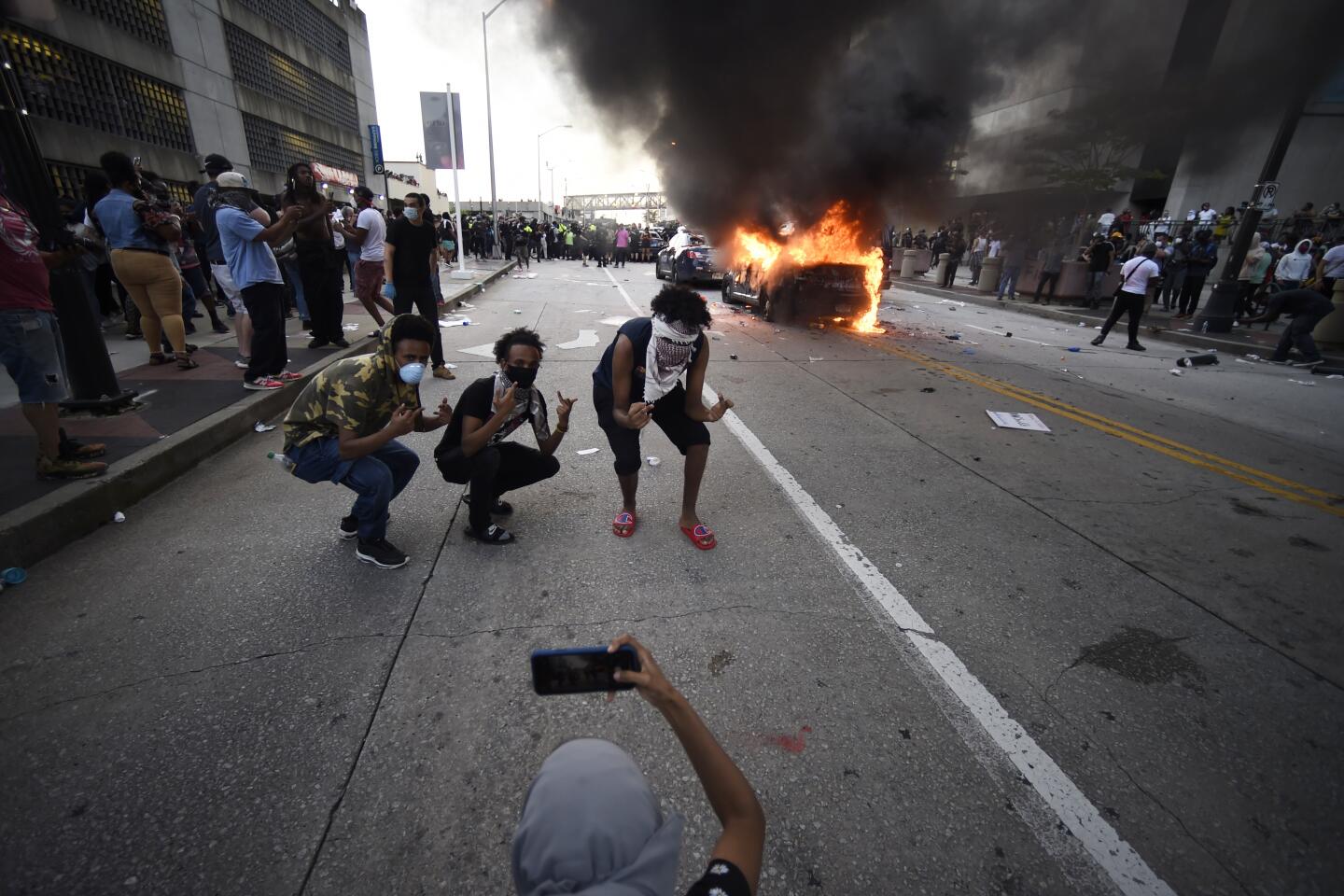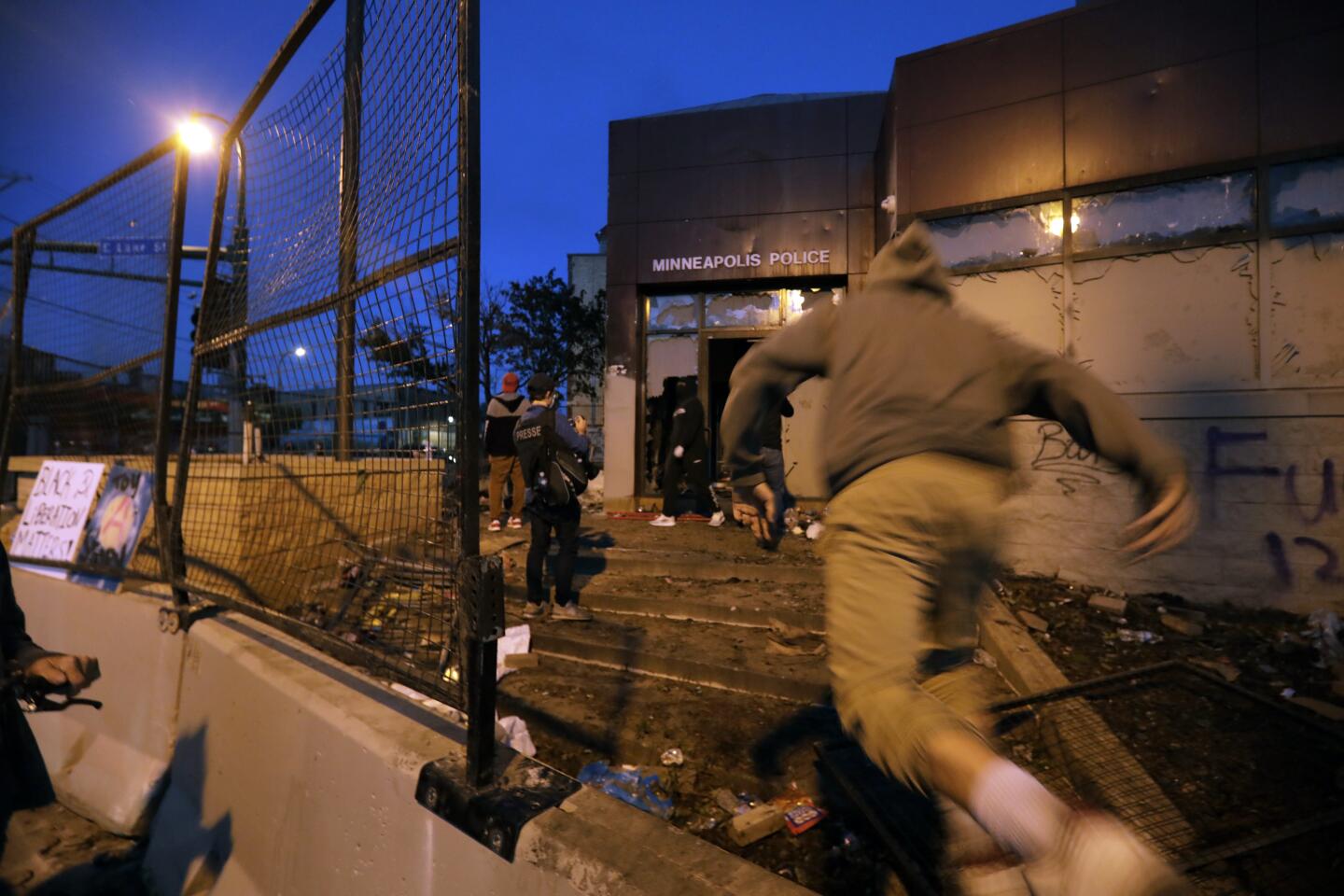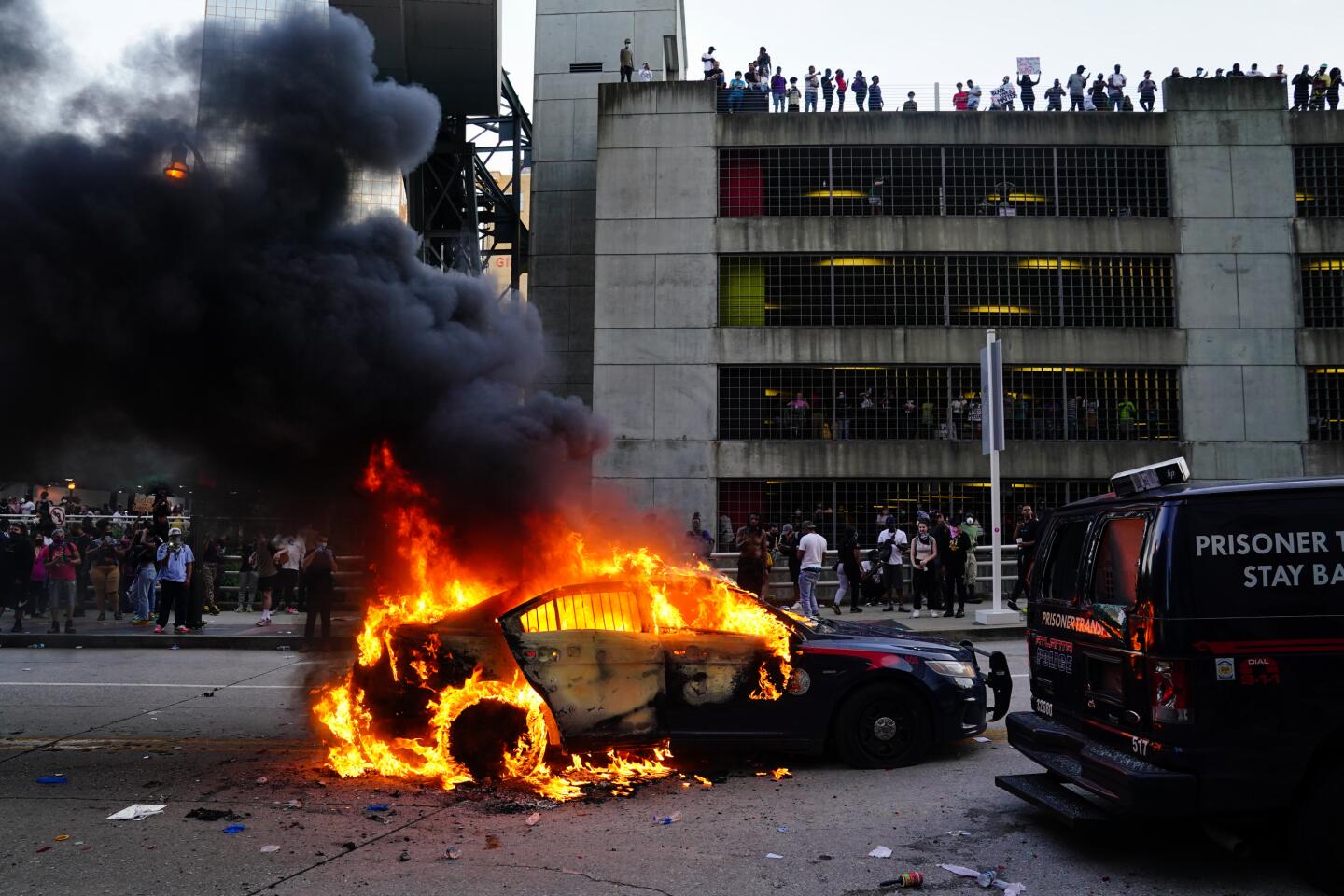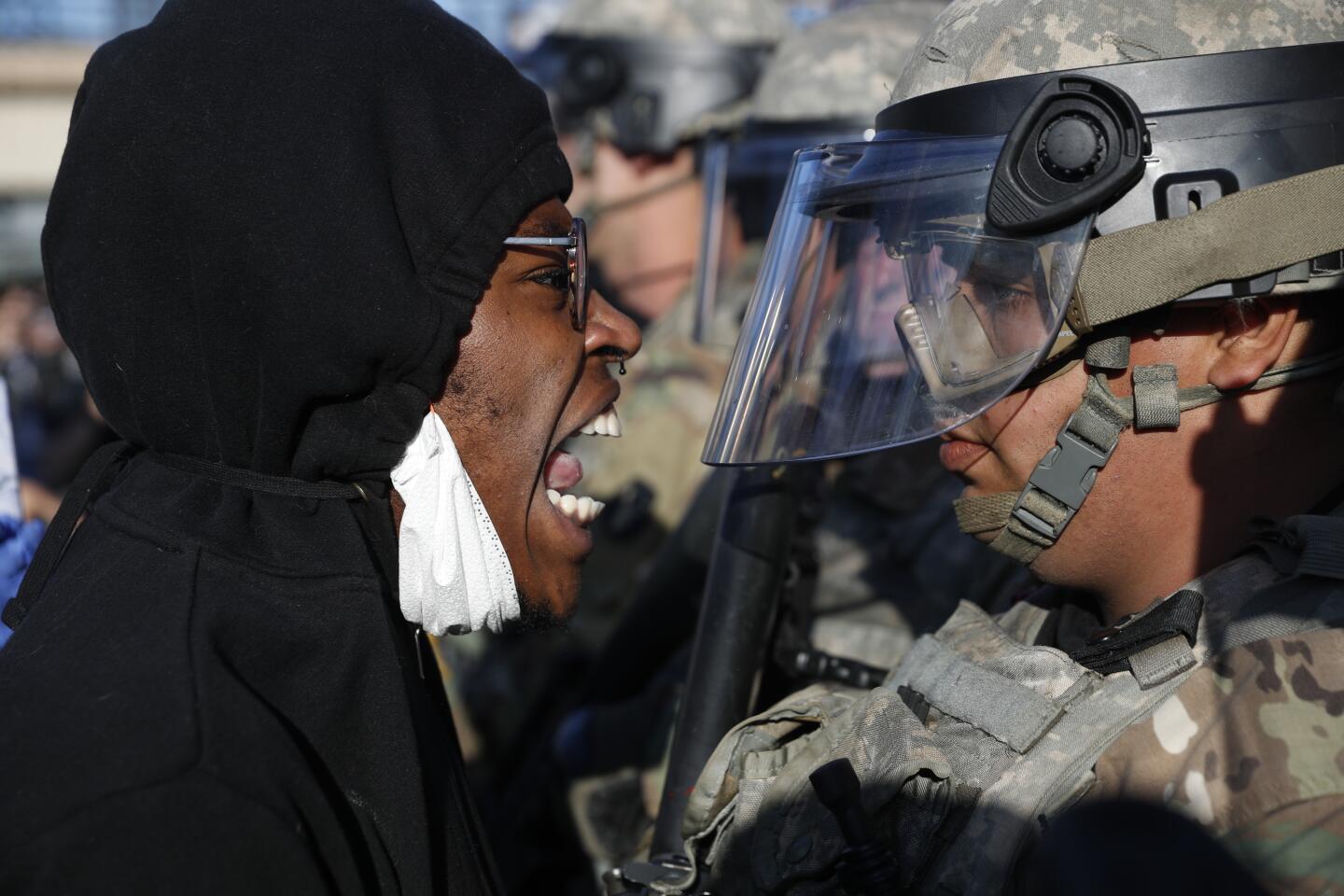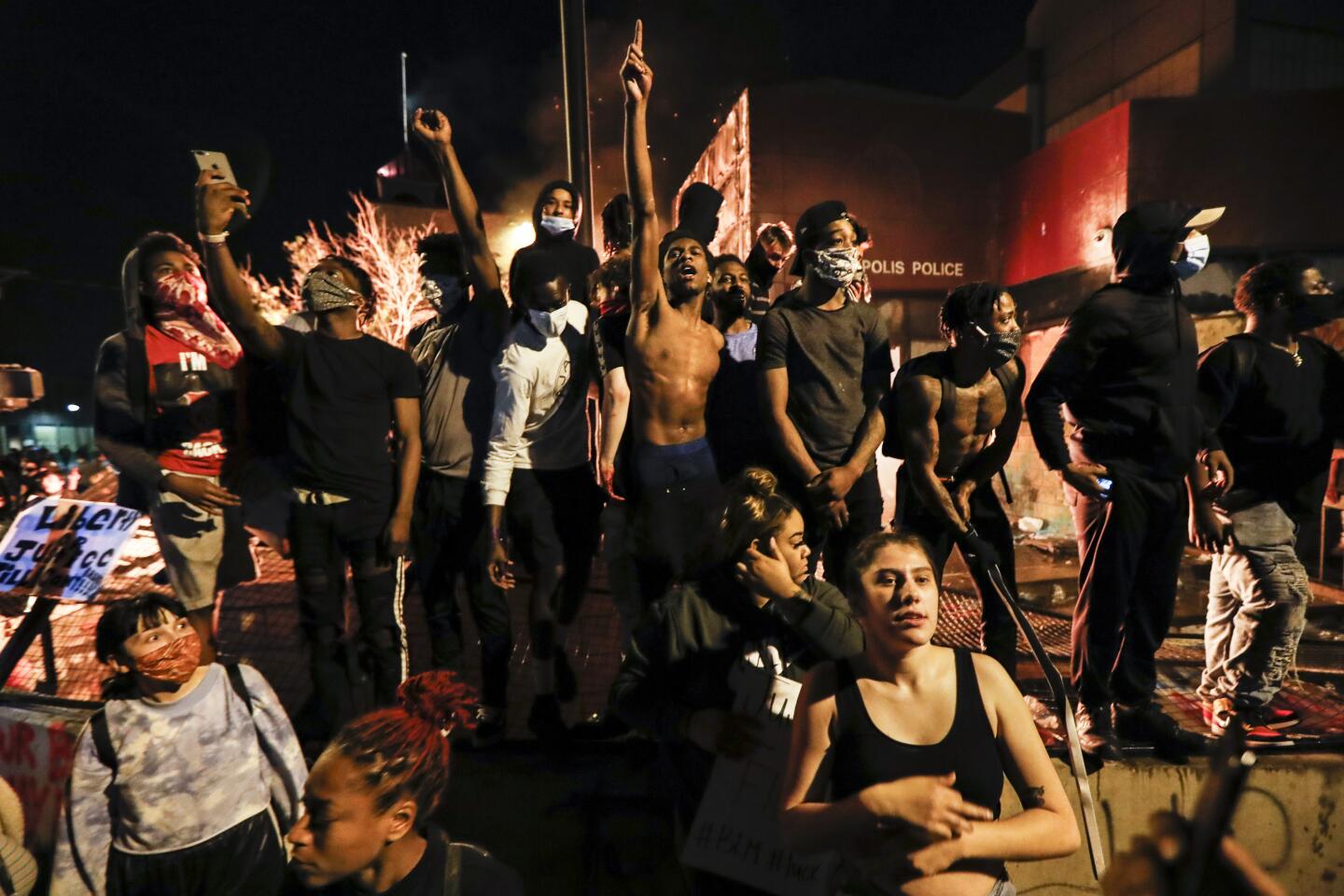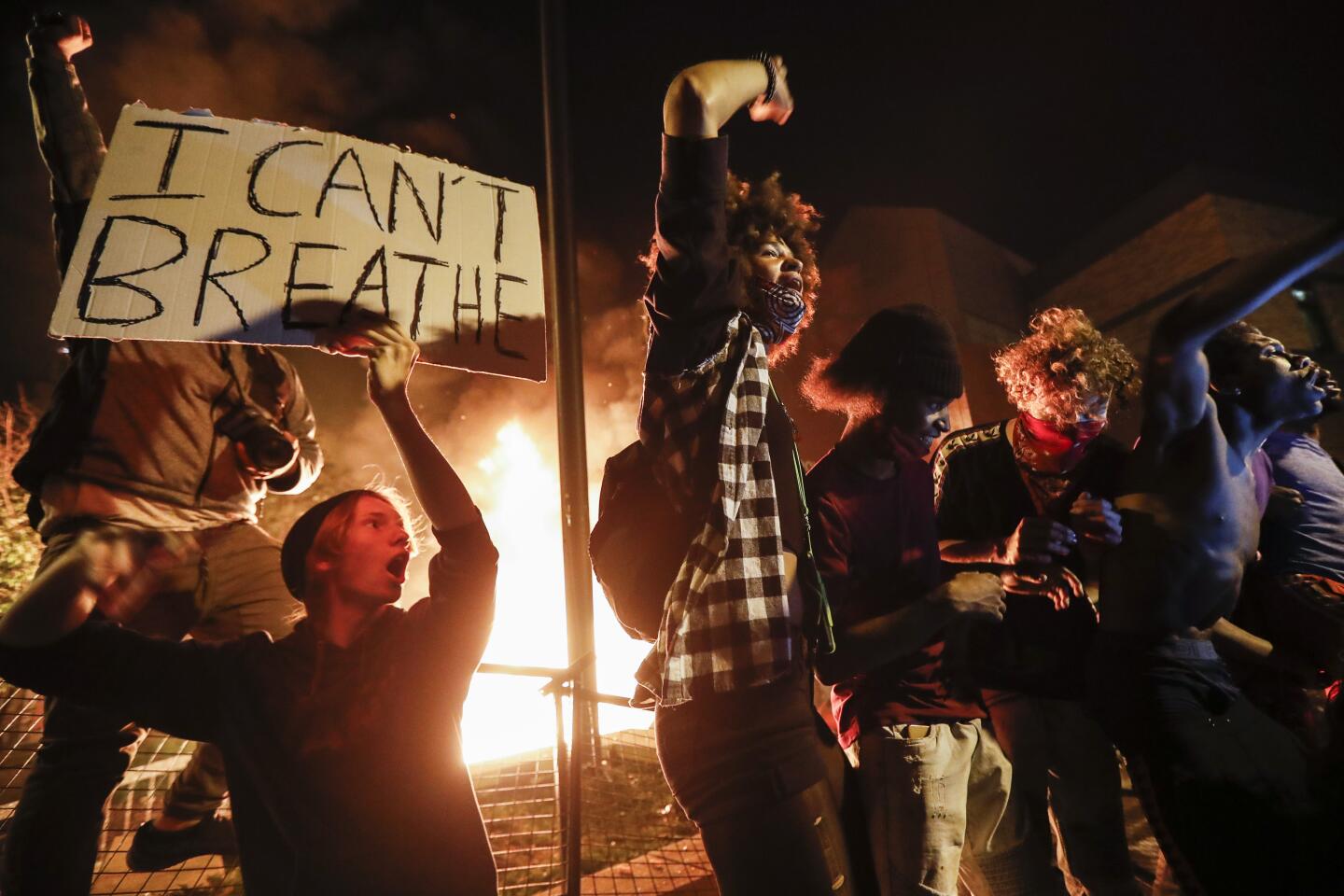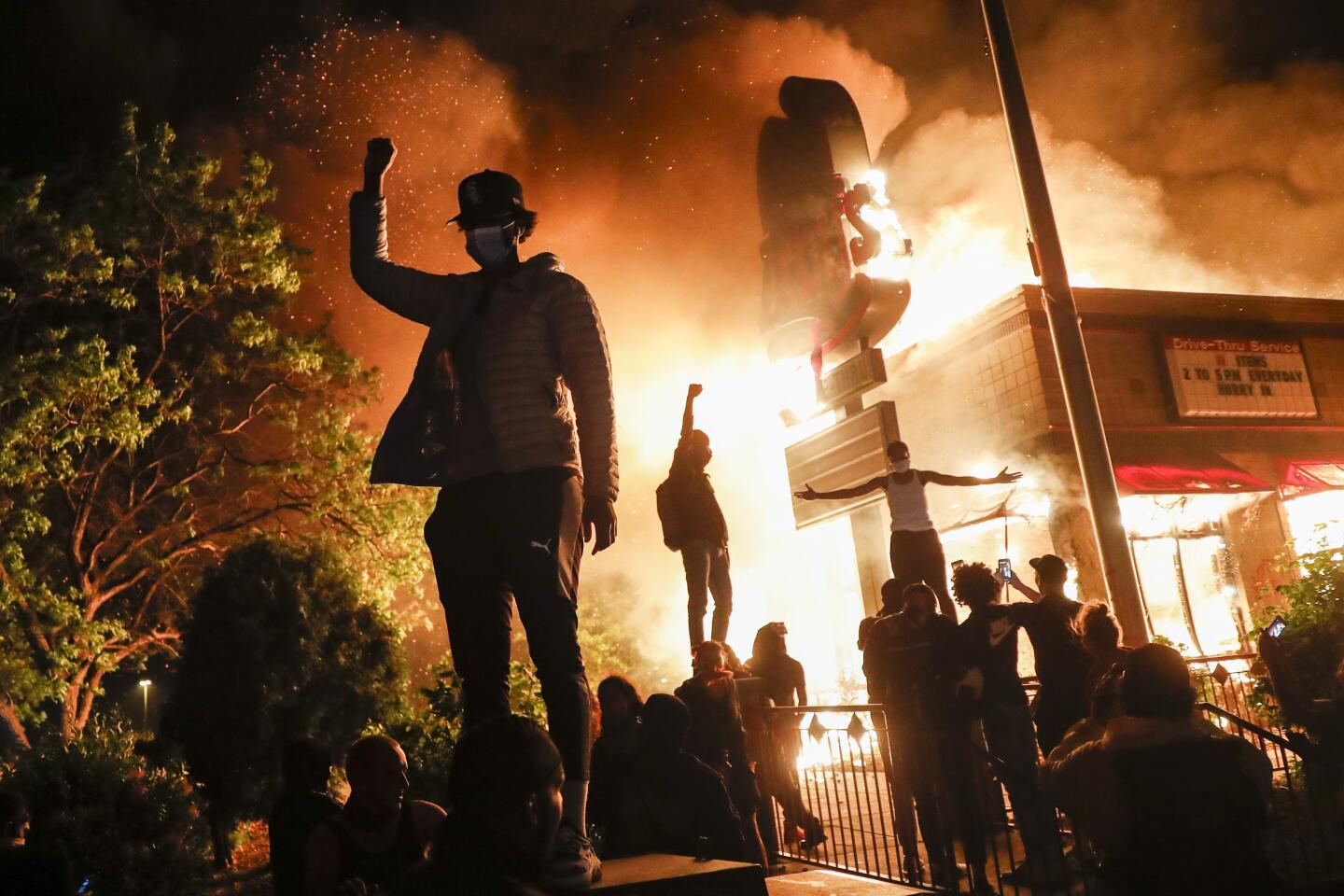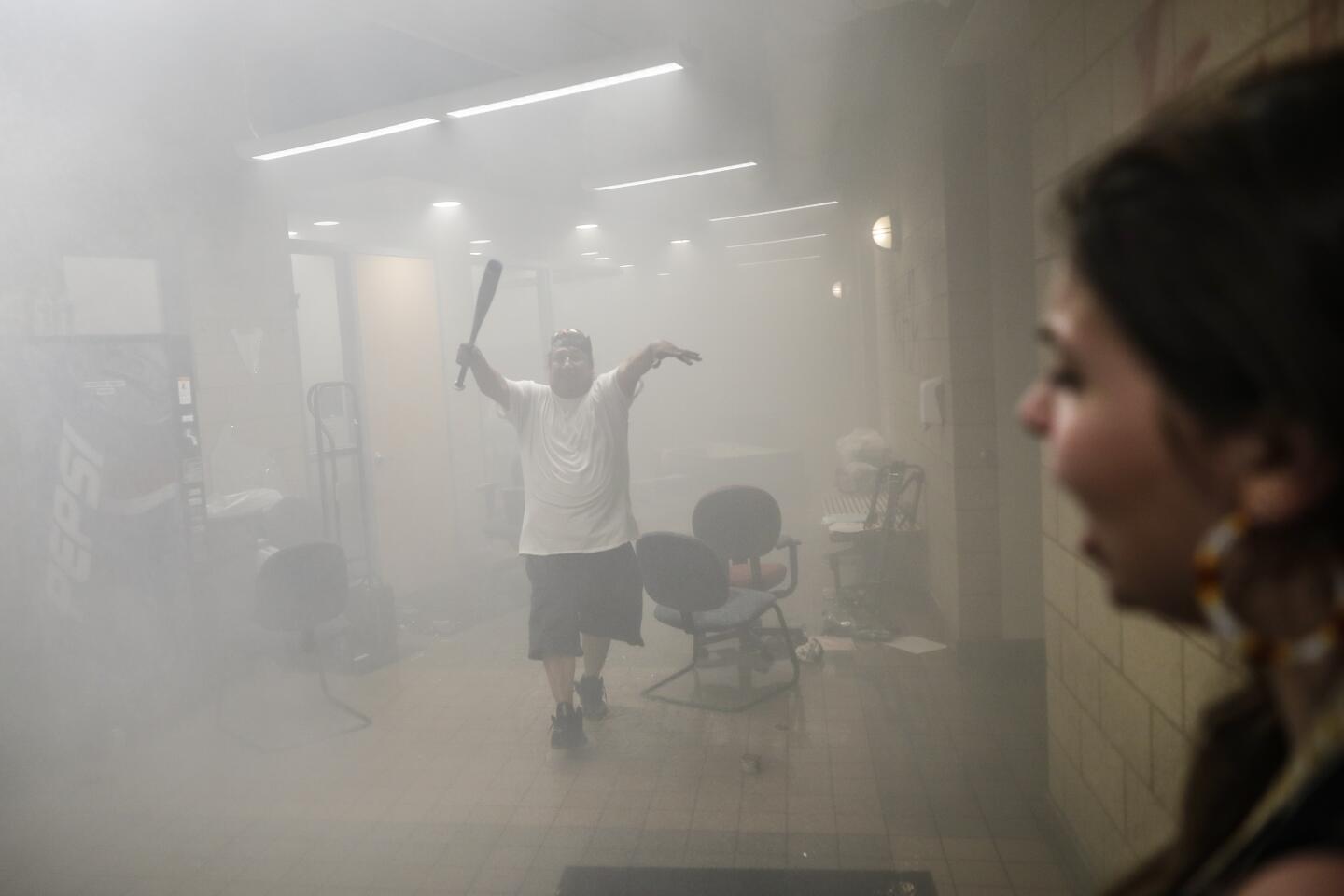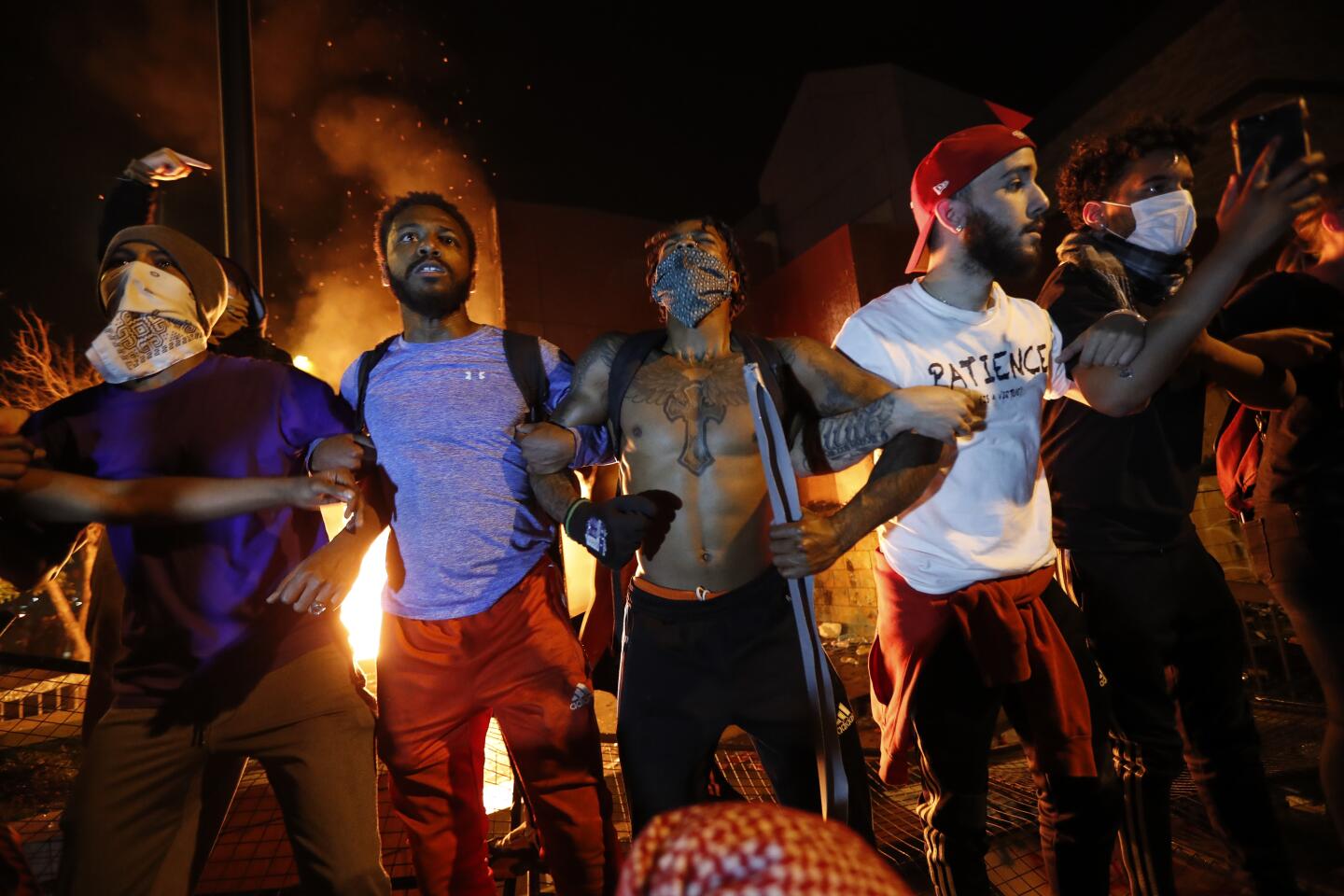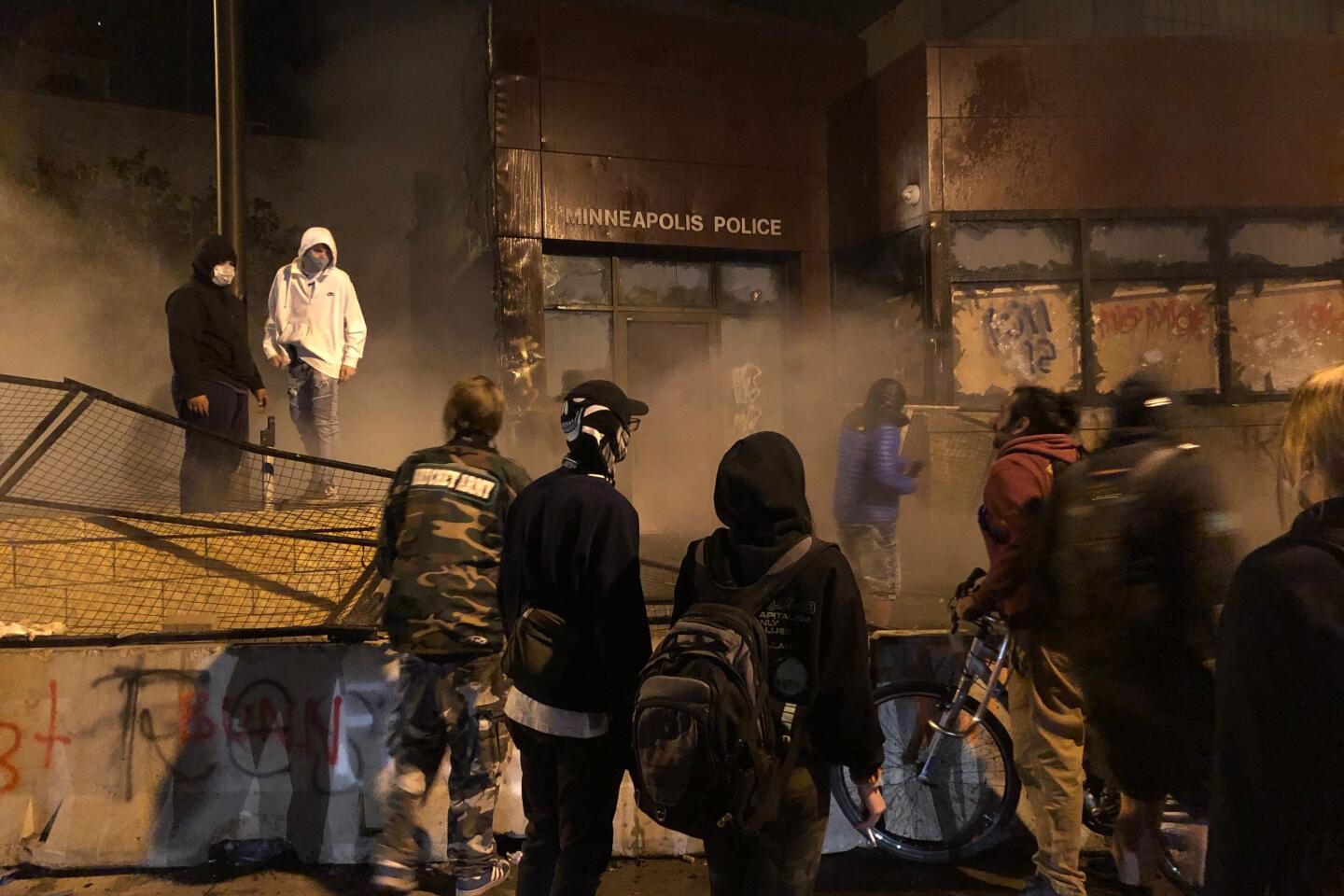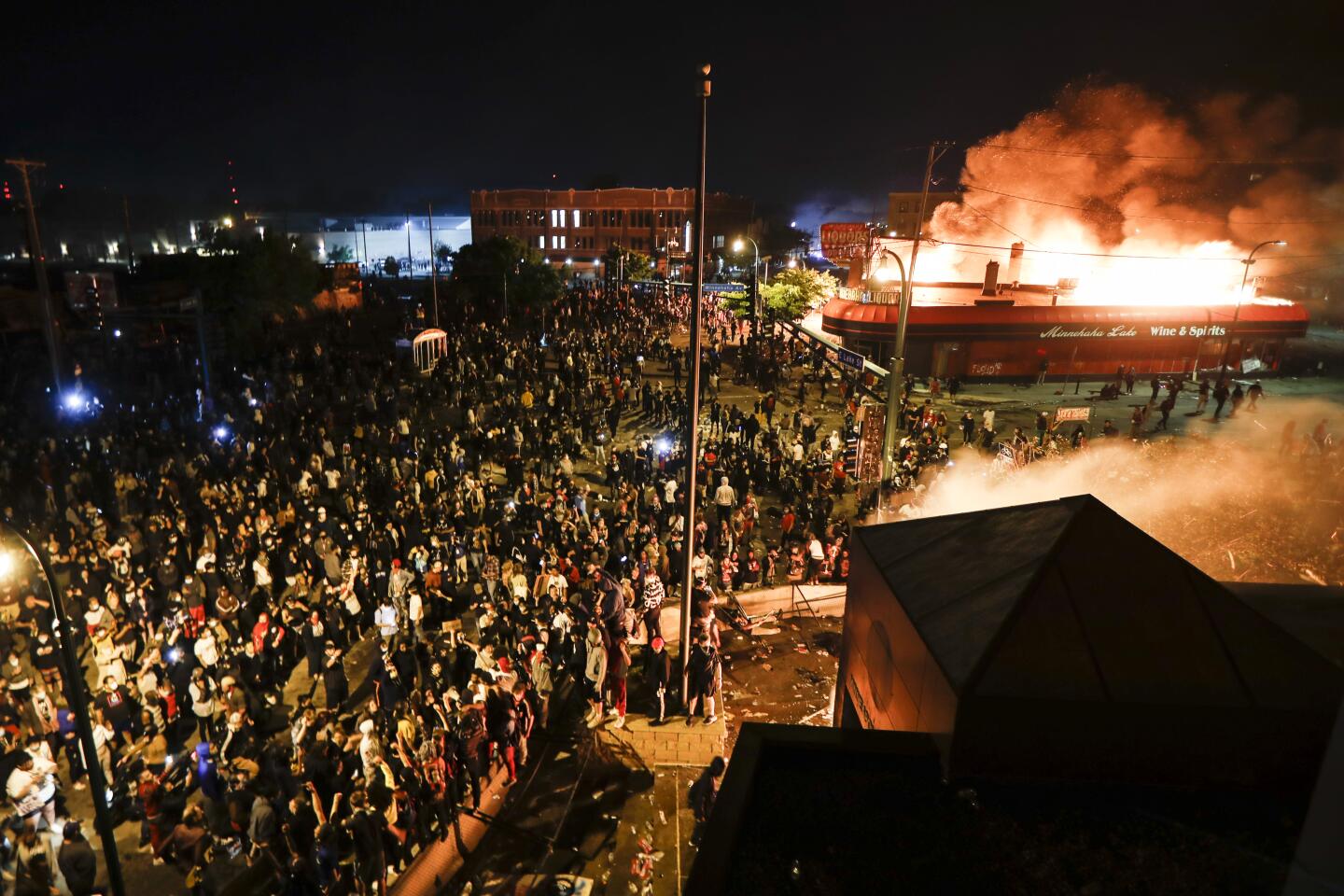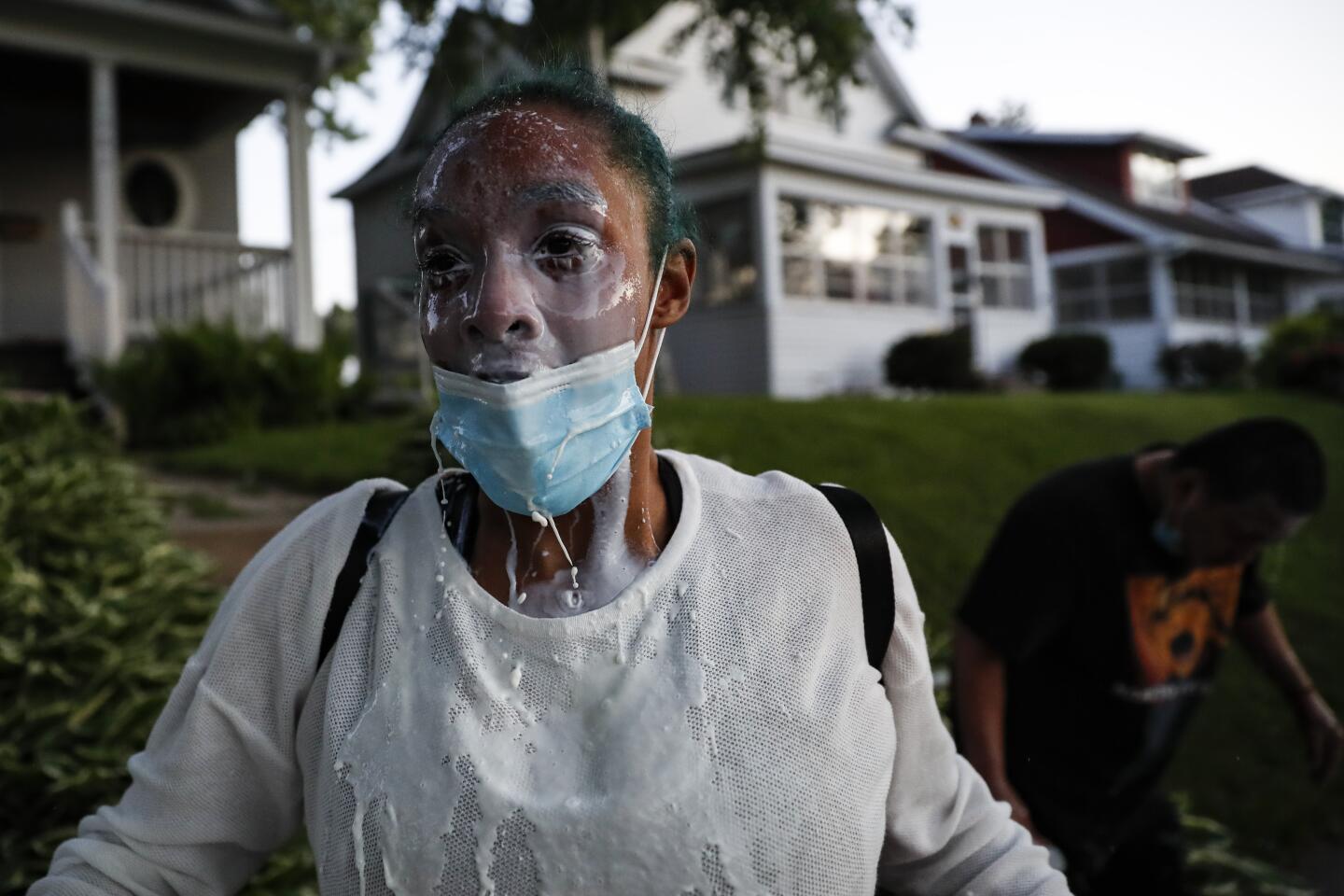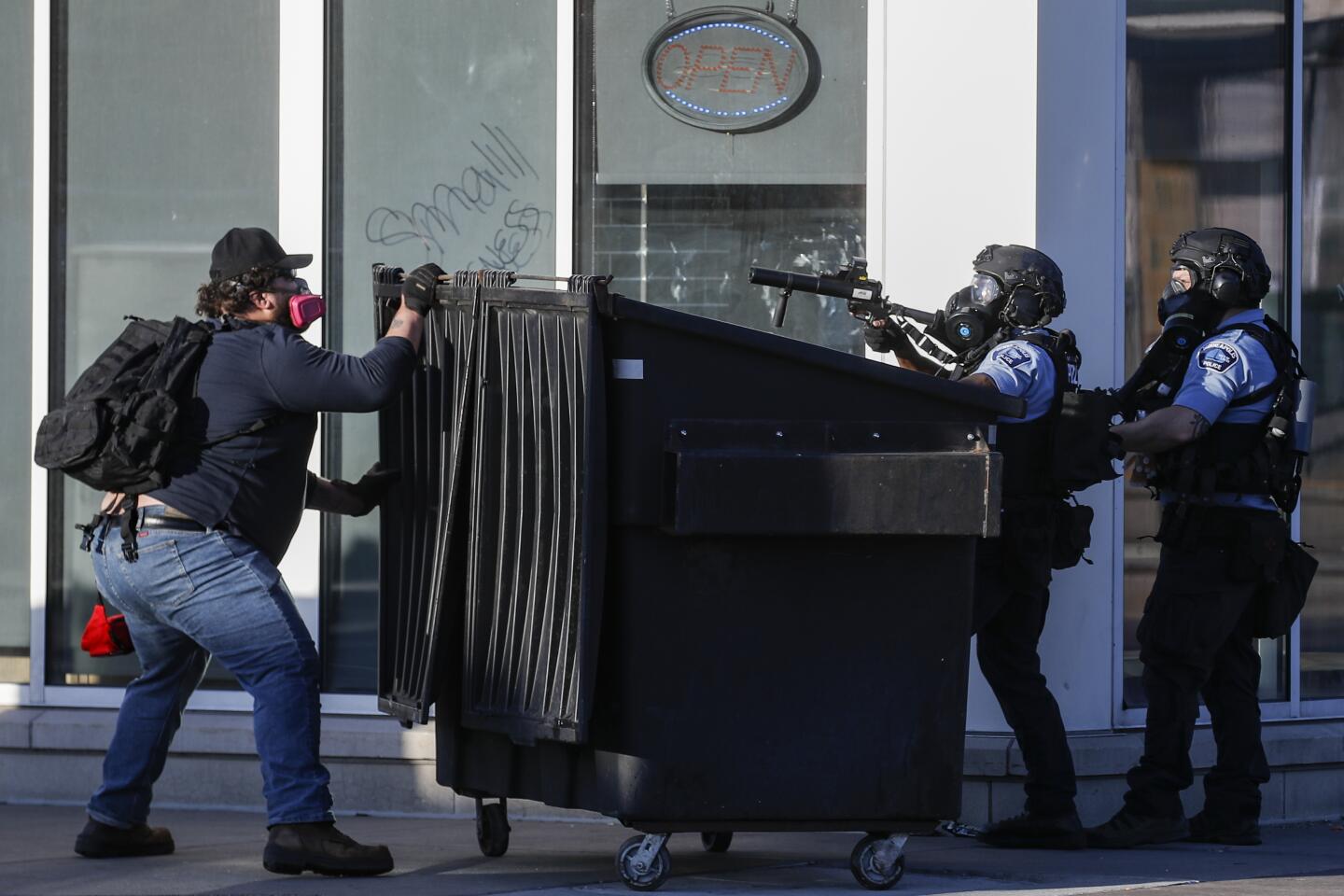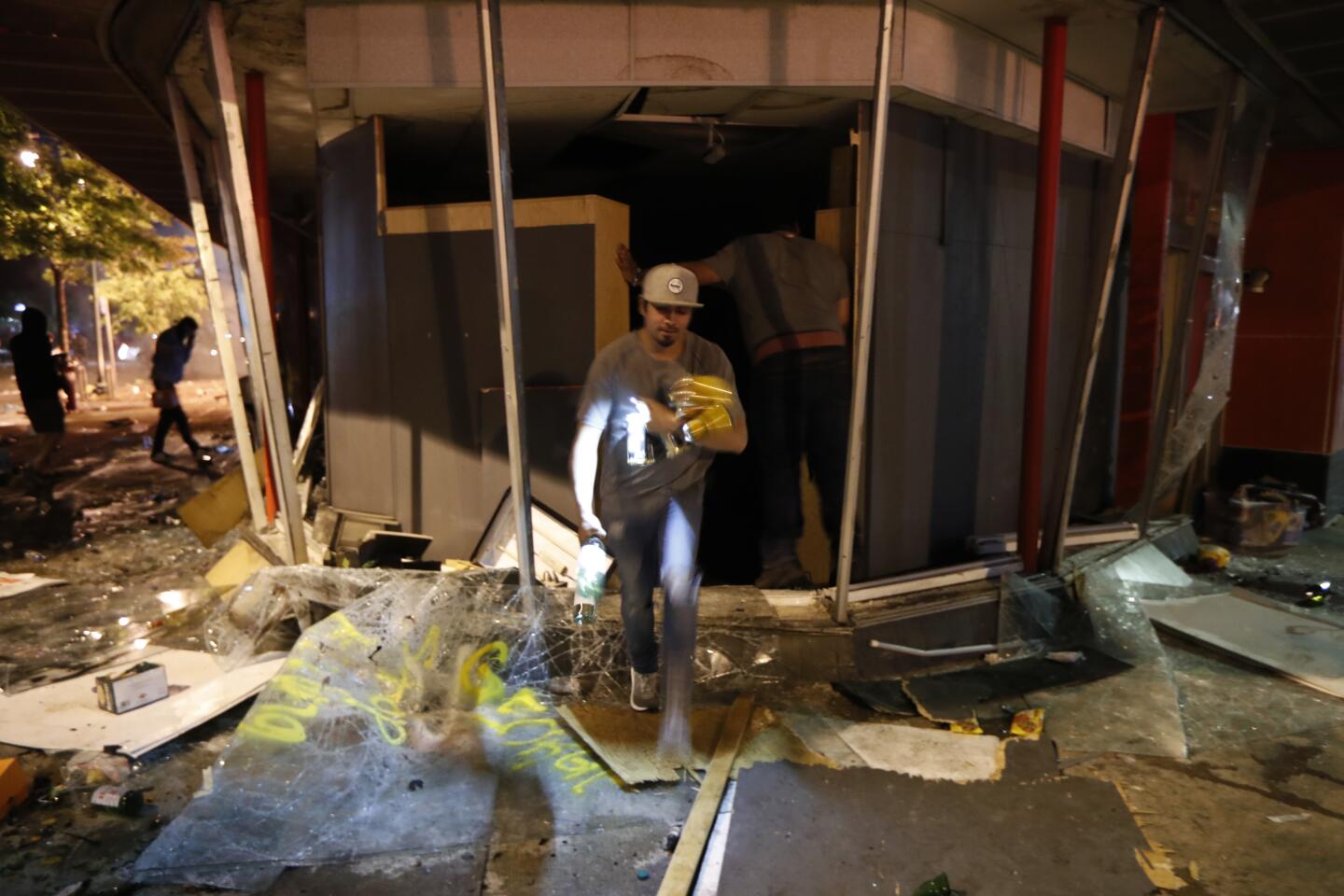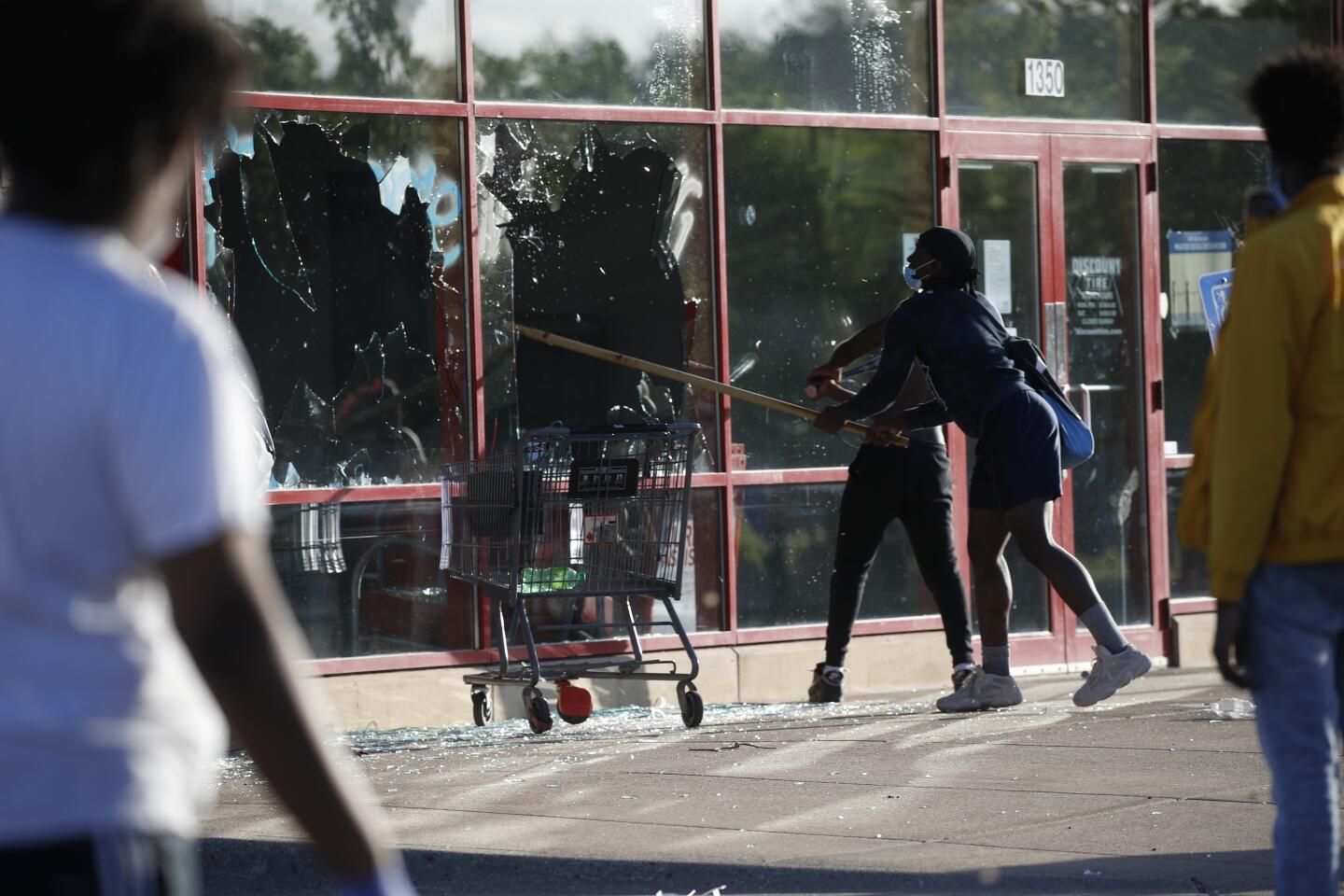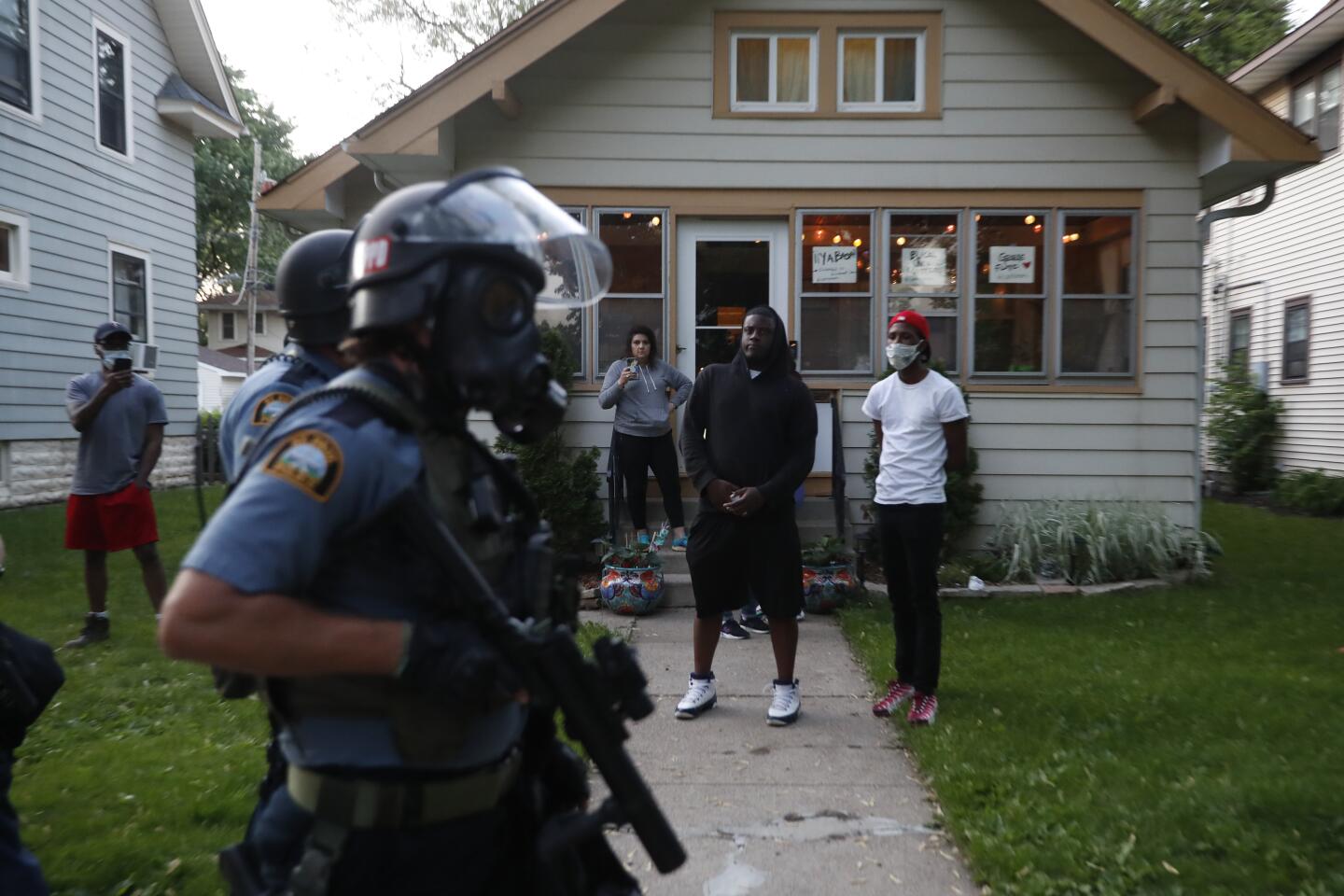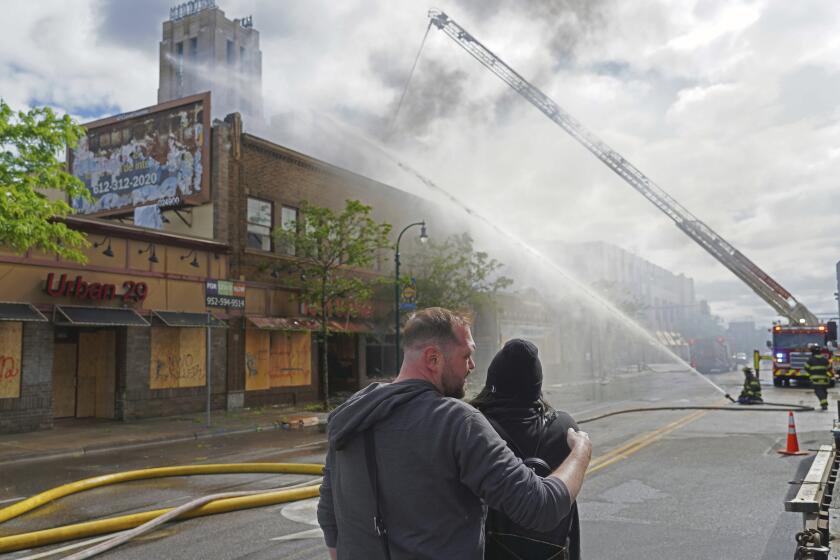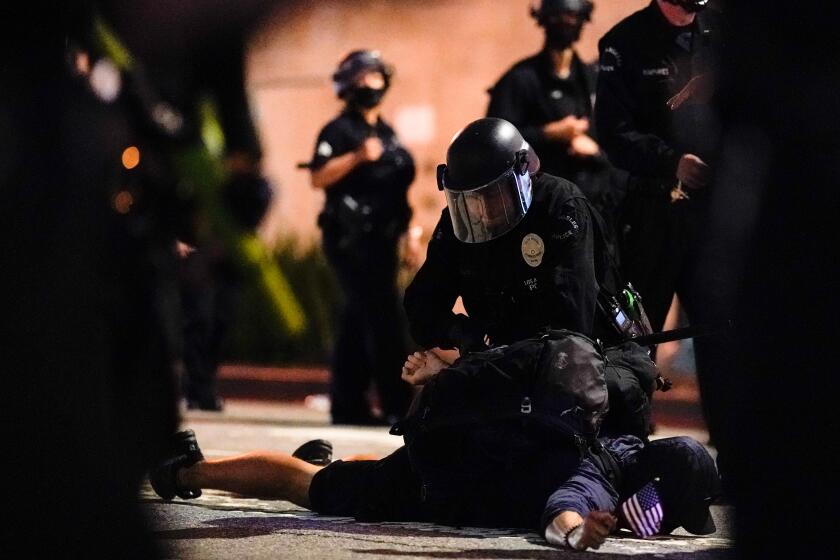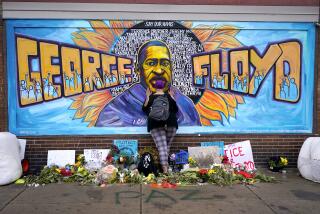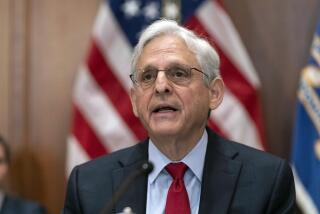‘How are we here again?’ Black America on edge after police killing of George Floyd
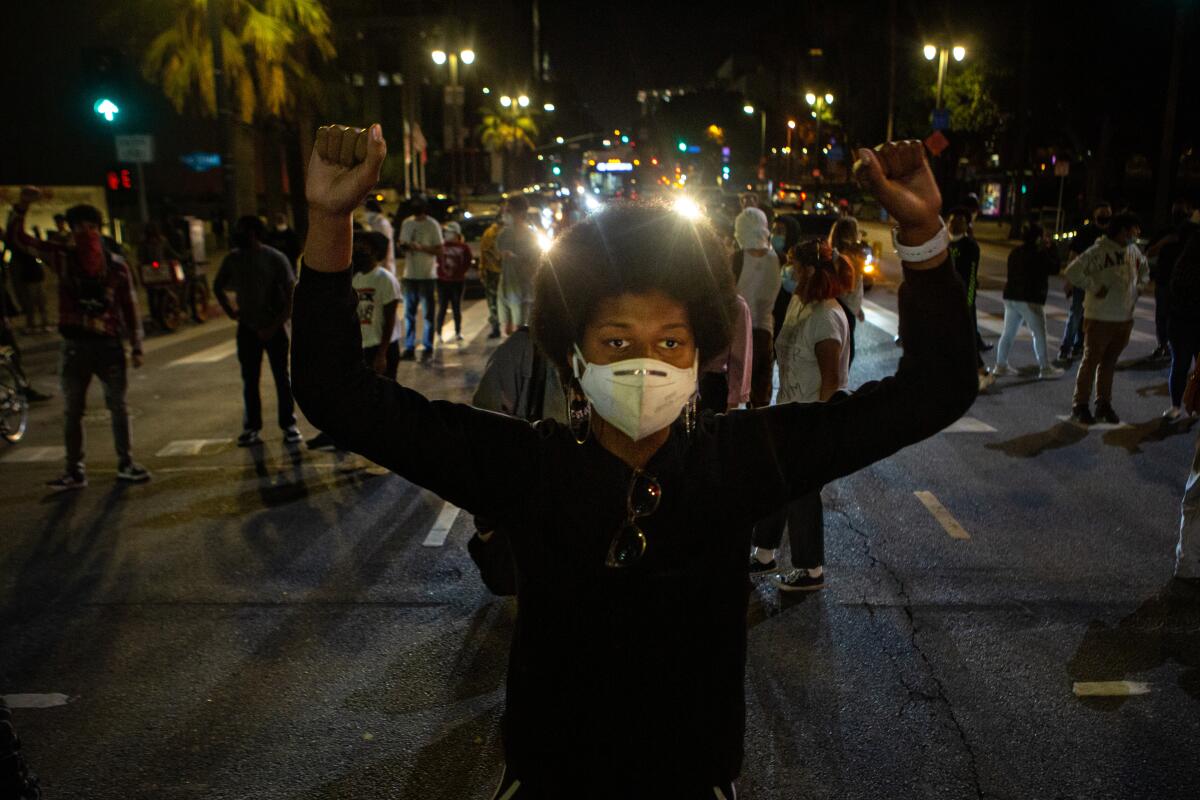
- Share via
ATLANTA — It was as if someone had lighted a fuse.
Almost as soon as a cellphone video appeared on social media showing a black man struggling to breathe — and finally going silent — with his neck under the knee of a white Minneapolis police officer, African Americans in the city’s Longfellow neighborhood took to the streets calling for justice.
Within days, the city was smoldering as protestors started fires and torched stores and a police station. Demonstrations swiftly spread to Los Angeles, where activists blocked a highway, and Atlanta, where protesters set a police vehicle on fire and smashed the windows of the CNN Center.
Watching it all play out on the news, Christie Peters, a 43-year-old general contractor in Atlanta, cried for three days straight.
“It’s just a lot to carry,” she said. “I think it just comes from a place of feeling ineffectual, because what you’re asking black people to do is have faith in a system where almost every position of power in this system is led by people who look like, speak like, vote like the very people who are perpetrating this against us.
“So how do you have faith in that system?”
It did not help that, like many Americans, she had spent the past months cooped up indoors, out of work and on edge amid the COVID-19 pandemic
“With 40 million people unemployed, this is a powder keg waiting to explode,” she said. “I feel fatigued every day. I think it’s just mental exhaustion about the unknown future of this country.”
Amid the anxiousness of living through a pandemic that has disproportionately killed minorities, the death of George Floyd at the hands of police quickly became a symbol of what many say is the nation’s failure to deliver on its promise of equality.
The altercation between the 46-year-old Floyd and Minneapolis police was set in motion before sunset Monday, when officers responded to a call from a convenience store south of downtown. An employee at Cup Foods reported that a man had tried to use a counterfeit $20 bill.
Not long after police officers arrived, Floyd was dead.
Black and Latino shop keepers, already outraged by George Floyd’s death, feel victimized again as city officials fail to stop looting and fires.
The video was released hours later. For many, it brought back memories of Eric Garner, an unarmed black man who died in 2014 in New York after police placed him in a chokehold face down on the sidewalk.
Both men had cried out the same words: “I can’t breathe.”
“We keep thinking, ‘How are we here again?’” said Margaret Sullivan, the 32-year-old host of a Minneapolis radio show that highlights marginalized voices.
Sullivan started her “Ms Margaret Live” show on KFAI Radio in March 2016, inspired by the fatal shooting just months before of 24-year-old Jamar Clark in north Minneapolis. Four months later, Philando Castile was shot by a police officer in Falcon Heights, Minn., five minutes from where she lives.
“We are outraged because Philando should have been the case to stop all of this,” Sullivan said Friday. “So for us, as Minnesotans, to have this happen back-to-back, it’s not new. We have been screaming about this.”
Carol Anderson, chair of African American Studies at Emory University, said she was struck by the cavalier manner in which the officer pressed his knee into Floyd’s neck.
The crowd mostly dressed in black held signs and rode bicycles across traffic lanes while some held up sign that read “We are not thugs.”
As people screamed at the officer to stop, his message was clear, she said: “‘We can do this to you with impunity.’”
“We have a nation that consistently criminalized blackness, that has systematically denied the humanity of black people,” Anderson said.
In Minneapolis, city leaders, white and black, stressed that protesters were right to be angry.
“All throughout America and right here in Minneapolis, we feel as if there was a knee on all of our collective necks, a knee that says ‘black life does not matter,’” Andrea Jenkins, the City Council’s vice president, said Thursday. “I am a part of this system to help to take that knee off of our necks.”
Jenkins, who is black, urged the mayor to declare a state of emergency calling racism a public health issue.
“Till we name this virus, this disease, that has infected America for the past 400 years, we will never ever resolve this issue,” she said.
The Minneapolis officer fired after George Floyd’s death was involved in police shootings during his 19-year career.
The political tension heightened Friday morning when President Trump took to Twitter to call the protesters “thugs” and threaten to take military action to bring Minneapolis “under control.”
“When the looting starts, the shooting starts,” Trump tweeted.
By the end of Friday, the officer who pinned Floyd down, Derek Chauvin, was arrested and charged with third-degree murder and manslaughter.
“Third-degree is a Band-Aid” Sullivan said. “It needs to go all the way. We are not letting up because we’ve seen this too many times.”
The sense of déjà vu was felt by African Americans across the country.
In 2013, black activists took to the streets across the nation to protest a Florida jury’s decision that found George Zimmerman not guilty of murdering Trayvon Martin, an unarmed black teenager, in 2012.
In 2014, rallies were held for Eric Garner. Then for John Crawford, a 22-year-old African American who was shot dead by police in Ohio after he was seen carrying a toy gun. Then for Michael Brown, an unarmed teenager who was killed outside an apartment complex in Ferguson, Mo.
Sullivan described Floyd’s death as a tipping point, coming not just after so many other local cases of police injustice but at a time when the coronavirus has built up anxiety and highlighted the health and economic disparity between blacks and whites.
“COVID-19 is affecting us at higher rates and job loss too,” she said. “People are barely making it, so we are already at a higher stress. In black culture, when something happens, we all gather, we come together and lean on each other, and we couldn’t do that, so that adds to all that separation, anxiety and stress.”
As the virus spread, data began to show that black people were not only feeling the economic impact more, but hospitalized and dying at much higher rates than whites. That data, public health experts said, reflect deep-rooted social and economic inequalities.
DeRay Mckesson, a Black Lives Matter activist who hosts “Pod Save the People,” said Floyd’s death was an example of Minneapolis’ policy failure.
Unlike in many other cities, the police department does not ban neck restraints, allowing certain types if the person is actively resisting arrest and more extreme holds — which can render somebody unconscious — if the person is “exhibiting active aggression” or an officer’s life is in danger.
“These are not isolated incidents,” Mckesson said. “These are the results of a system that was designed to produce these outcomes.”
As with most of the high-profile cases of police violence, Floyd’s death became a national story only because it was captured on raw video captured by cellphone, he said.
Many activists were quick to link Floyd’s death to a long list of recent injustices in states as far afield as Kentucky and Georgia.
Thursday night, seven people were shot in downtown Louisville, Ky., as they protested the death of Breonna Taylor, a 26-year-old emergency medical technician who was shot when the police raided her apartment in March.
The gunfire during the protests “came from within the crowd, not from police officers,” said Mayor Greg Fischer.
Earlier this month, protests erupted in Brunswick, Ga., and then spread across the nation after a video showed a white father and son confront and fatally shoot Ahmaud Arbery, a 25-year-old black man, as he jogged in a Georgia neighborhood. That incident happened in February, but it was not until the video was released and the protests swelled that the white men were arrested and charged with felony murder.
In Atlanta, Christie Peters said she didn’t think many white people really understood the level of anxiety she and her husband felt as they watched the video of a grown man being choked by police or read news stories of a woman who’d been shot in her home.
“I have never committed a crime and I still am terrified,” she said. “That should not be in a place where I pay taxes, where I have every financial and legal responsibility as a citizen, but I don’t have full rights and protections. I don’t see blue-eyed, blond-haired Marcia getting killed in her bed. That doesn’t happen.”
Jarvie reported from Atlanta and Etehad from Los Angeles. Chris Megerian contributed to this report.
More to Read
Sign up for Essential California
The most important California stories and recommendations in your inbox every morning.
You may occasionally receive promotional content from the Los Angeles Times.
